
biz times .com Locally Owned Since 1995 MAY 1MAY 14, 2023 » $6.00 BizTimesMilwaukeeBizTimesMilwaukee BizTimesMilwaukeeBizTimesMilwaukee BizTimesMilwaukeeBizTimesMilwaukee BizTimesMilwaukeeBizTimesMilwaukee BizTimesMilwaukeeBizTimesMilwaukee BizTimesMilwaukeeBizTimesMilwaukee BizTimesMilwaukeeBizTimesMilwaukee BizTimesMilwaukeeBizTimesMilwaukee BizTimesMilwaukeeBizTimesMilwaukee BizTimesMilwaukeeBizTimesMilwaukee BizTimesMilwaukeeBizTimesMilwaukee BizTimesMilwaukeeBizTimesMilwaukee BizTimesMilwaukeeBizTimesMilwaukee BizTimesMilwaukeeBizTimesMilwaukee BizTimesMilwaukeeBizTimesMilwaukee BizTimesMilwaukeeBizTimesMilwaukee BizTimesMilwaukeeBizTimesMilwaukee BizTimesMilwaukeeBizTimesMilwaukee BizTimesMilwaukeeBizTimesMilwaukee BizTimesMilwaukeeBizTimesMilwaukee BizTimesMilwaukeeBizTimesMilwaukee BizTimesMilwaukeeBizTimesMilwaukee BizTimesMilwaukeeBizTimesMilwaukee BizTimesMilwaukeeBizTimesMilwaukee BizTimesMilwaukeeBizTimesMilwaukee BizTimesMilwaukeeBizTimesMilwaukee BizTimesMilwaukeeBizTimesMilwaukee
Leadership, culture and growth for the next generation
Join BizTimes Media and a panel of family and closely held business owners for idea sharing and hands-on learning to help you navigate your way through the challenges of growing and leading your business.
The program begins with a keynote conversation, followed by a panel discussion, concurrent breakout sessions and a networking and cocktail reception.
Keynote Conversation:
» Richard Bemis, Board of Directors, Retired Chairman and CEO, Bemis Manufacturing Company (1)
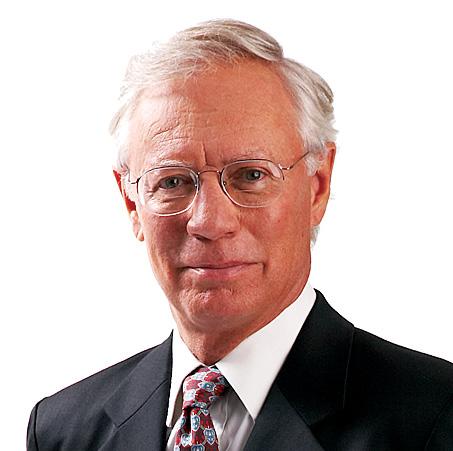
» Vesla Hoeschen, Chair of the Board, Bemis Manufacturing Company (2)
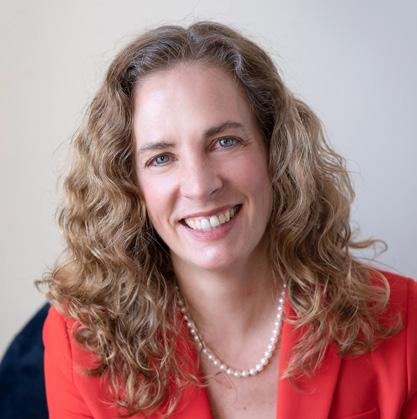

Panelists:
» George Baumann, President and CEO, Great Lakes Industrial – 3rd generation (3)
» Anne Cookson, Co-Owner, Baker’s Quality Pizza Crusts & Crustology – 3rd generation (4)
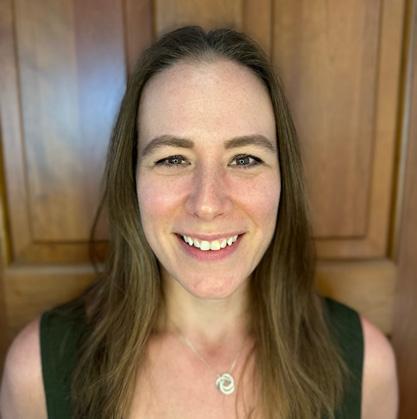
» Jeannie Cullen, Co-President, JP Cullen – 5th generation (5)
» Matthew Powell, President, Century Fence – 4th generation (6)


Concurrent Breakout Sessions:
» Raising Outside Capital: A Guide for the Next Phase of Your Company’s Growth
» The Role of Culture in Generational Transition
Sponsors:

Wednesday, June 7, 2023 2:00-2:30PM - Registration | 2:30-5:00PM - Program | 5:00-6:30PM - Cocktails and hors d’oeuvres Brookfield Conference Center Register Today! biztimes.com/family
Presents:
RegisterToday!
3 4 5 2 6 1


BizTimes Milwaukee (ISSN 1095-936X & USPS # 017813) Volume 29, Number 2, May 1May 14, 2023. BizTimes Milwaukee is published bi-weekly, except monthly in January, February, March, April, July, August, November and December by BizTimes Media LLC at 126 N. Jefferson St., Suite 403, Milwaukee, WI 53202-6120, USA. Basic annual subscription rate is $108. Single copy price is $6. Back issues are $9 each. Periodicals postage paid at Milwaukee, WI and additional mailing offices. POSTMASTER: Send all UAA to CFS. NON-POSTAL AND MILITARY FACILITIES: Send address corrections to BizTimes Milwaukee, 126 N. Jefferson St., Suite 403, Milwaukee, WI 53202-6120. Entire contents copyright 2023 by BizTimes Media LLC. All rights reserved. LOCALLY OWNED FOR 28 YEARS biz times .com 16 Serving Milwaukee How local restaurant groups are dealing with incredibly tight labor market COVER STORY 4 Leading Edge 4 NOW BY THE NUMBERS 5 THE FRANCHISEE – School of Rock 6 PROJECT PITCH IT – Podcast Town 7 BIZ TRACKER GETTING THERE – Kemp Collings, Borgman Capital 8 MEET THE WISCONSIN 275 –ThedaCare CEO Dr. Imran Andrabi 9 COFFEE BREAK – Robert Parker PUBLIC RECORD – Harley CEO’s potential big payday 10 ON MY NIGHTSTAND BIZ POLL 11 Biz News 11 SHOP TALK – Promoting a culture of safety 12 THE INTERVIEW – Cathy Jacobson 14 Real Estate 32 Strategies 32 COACHING – Aleta Norris 33 LEADERSHIP – George Satula 34 HUMAN RESOURCES AND MANAGEMENT – Cary Silverstein 35 TIP SHEET 37 Biz Connections 37 NONPROFIT 38 GLANCE AT YESTERYEAR COMMENTARY 39 5 MINUTES WITH… Chris Corkery, founder of Planet to Plate Contents » MAY 1 - MAY 14, 2023 Special Reports 24 Small Business Week A closer look at the two most popular U.S. Small Business Administration loan programs. 26 Franchisees Find out the franchise brands that are targeting southeastern Wisconsin for expansion. 28 BizExpo A Q&A with Tim Kight, the keynote speaker at this year’s BizExpo. JAKE HILL
biztimes.com / 3
PHOTOGRAPHY
Froedtert Health, ThedaCare plan to merge
By Maredithe Meyer, staff writer
Wauwatosa-based Froedtert Health and Neenah-based ThedaCare plan to merge into one health system. The nonprofit hospital systems recently announced that they have signed a letter of intent to start the process of combining “into one health system to advance local health care for our patients and improve the health and well-being of our communi -
BY THE NUMBERS
ties,” according to a news release.
“Both of our organizations have deep, long-standing ties in the communities we serve. Our Wisconsin roots have been instrumental in building creative solutions to meet our communities’ health needs,” said Cathy Jacobson, president and CEO of Froedtert Health. “By coming together with the state’s leader in regional communi-
ty health, our combined organization will be poised to meaningfully address health equity and disparities, enhance access to a broader array of services and make it easier for patients to navigate the health care system. The Medical College of Wisconsin will continue to be an important partner in our work together.”
Froedtert & the Medical College of Wisconsin health network operates Froedtert Hospital, the only academic medical center and adult Level I Trauma Center in eastern Wisconsin, located at the Milwaukee Regional Medical Center on West Watertown Plank Road.

The network also includes Froedtert Menomonee Falls Hospital, Froedtert West Bend Hospital and Froedtert Community Hospital with locations in Mequon, New Berlin, Oak Creek and Pewaukee. With more than 45 health centers and clinics, the system employs more than 17,000 people. Froedtert’s revenue for fiscal 2022 totaled $3.3 billion.
ThedaCare operates eight hospitals and nearly three dozen clinics and health care centers in northeast and central Wisconsin, according to its website. The organization provides care to more than 650,000 residents in 17 counties and employs approximately 7,000 providers and team

members. ThedaCare’s revenue for fiscal 2022 totaled $1.2 billion.

“ThedaCare and Froedtert Health have a commitment to the people of Wisconsin,” said Dr. Imran Andrabi, ThedaCare president and CEO. “We are alike in many ways, and our leaders and our boards have long been asking how we can accelerate our work to make a positive and lasting impact on our state. We have a shared vision for what we can do together to improve the health and well-being of the communities and be proactive partners in health. We are eager to start exploring how we can build a healthier, brighter future for Wisconsin.”
Initially, Andrabi will serve as president of the combined health system while Jacobson serves as CEO. Following a six-month transition period, Jacobson will retire and Andrabi will assume the joint role of president and CEO.
Jacobson joined Froedtert in 2010 as executive vice president of finance and strategy, chief financial officer and chief strategy officer. By 2012, she had assumed the role of president and then CEO.
Andrabi took over as president and chief executive officer of Neenah-based ThedaCare in 2017. Previously, Andrabi was regional president and chief executive officer of the Toledo region for Mercy Health. n
4 / BizTimes Milwaukee MAY 1, 2023 Leading Edge
NOW
BIZTIMES DA ILY – The day’s most significant news → biztimes.com/subscribe
Froedtert Hospital in Wauwatosa.
In 2022, the overall tonnage of goods shipped through Port Milwaukee was
2.27 MILLION, down 3.2% from 2021.
“I thought it was just going to be a temporary thing. I ended up falling in love with it day one, realizing it’s such an amazing program for the kids and for the community.”
the FRANCHISEE
“Somebody from School of Rock reached out to my dad letting him know the owner wanted to sell. We pondered it for a while and then ended up pulling the trigger. … Milwaukee is a city on the rise with its thriving cultural scene, making it a perfect place for a School of Rock franchise.”
MATT MCFARLAND SCHOOL OF ROCK
THE FRANCHISE: Canton, Massachusetts-based School of Rock operates nearly 350 performance-based music education centers in 15 countries. Founded in 1998 as a single school in Philadelphia, the company offers an array of music lessons for both kids and adults, including guitar, vocals, piano and drums.
JANUARY 2019:
Shortly after graduating from college and finding his degree in video production was not his passion, Matt McFarland started filling in as studio coordinator at a School of Rock in Caramel, Indiana. It was one of three School of Rock locations owned by his dad, Steve McFarland, and it was where Matt took drum lessons growing up.

DECEMBER 2019:
Having decided that School of Rock was where he wanted to build a career, McFarland worked his way up to the role of general manager.
MARCH 2022:
McFarland joined his dad in becoming a franchise owner, with the joint purchase of School of Rock in Shorewood. The school opened in 2013 and is currently the brand’s sole location in Wisconsin. The McFarlands were already familiar with the Milwaukee market, having annually sent students to perform at Summerfest prior to the COVID-19 pandemic.



“We want to follow the franchise model as much as possible. With Shorewood, we wanted to make sure we got back on track. It’s easy, in music, to get creative and do your own thing, but a lot of times things get off track and away from the School of Rock model.”
MARCH 2023:
Since the McFarlands took over, enrollment at the Shorewood location is up 34% year-overyear. Moving forward, the brand is looking to expand its presence in Milwaukee.
THE FRANCHISE FEE: $49,900
biztimes.com / 5
Matt McFarland
School of Rock at 4050 N. Oakland Ave. in Shorewood.
Steve McFarland
PROJECT PITCH IT

PODCAST TOWN
Podcast Town aims to be a one-stop shop for content creation needs
By Ashley Smart, staff writer
For most people, their exposure to the world of podcasting is simply through entertainment. That wasn’t enough for Elzie Flenard III. He has taken his love for podcasting and used it to create a full-service agency called Podcast Town.
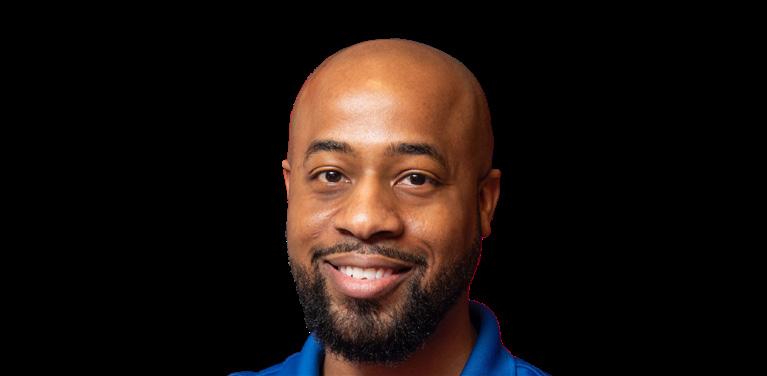

Before starting Podcast Town, Flenard was a podcaster himself. His flagship show, Enterprise NOW!, features conversations with B2B founders, entrepreneurs and thought leaders. He began the show in 2016, growing it into a business as he continually sought feedback from guests.
“At the end of all of my podcast episodes, I got smart at some point and started to figure out that I could basically have several focus groups with these guests because they’re in the industry and seeing things I don’t see,” said Flenard. “Instead of guessing what the market needed, I just asked a question.”
After hearing from business leaders how difficult it is to create and promote content, he rebranded his company to Podcast Town and began offering a more extensive suite of services to B2B companies, including coaching, editing and marketing strategy. There’s also a full Podcast Town Academy.
Podcast Town does a deep dive with each client to determine what the end goal in creating a podcast is and how much time they can dedicate to the product. For most clients, the top goals in launching a podcast are to drive additional revenue and increase brand awareness.
“We try to go a bit deeper and really understand what actions we want to drive with the show, and we literally build the show around that,” said Flenard.
One of Podcast Town’s clients is a pair of coaches that hosts a show called Activity
Coaching Conversations. Since working with Podcast Town, the duo has tripled attendance at their clinics and become known as experts in their field, according to Flenard.
“We really try to become a partner in their business,” he said.
While Podcast Town is currently headquartered in Wauwatosa, the company also has a larger Brookfield location that includes a training room, studio, control center and space for live events. Most training sessions take place in Brookfield.
Aside from a $1,500 cash prize from participating in Project Pitch It and a $10,000 grant through Milwaukee’s FOR-M incubator, Podcast Town has mostly been bootstrapped.
“I always tease that we built the business with no boots or any straps,” said Flenard.
His long-term vision for Podcast Town is to expand the more tech-focused aspects of the business and open more locations for the academy.
“The message I always try to drive home is the ability to create relationships, because that’s a language that businesspeople understand,” said Flenard. n

Leading Edge @BIZTIMESMEDIA – Real-time news
LEADERSHIP: Elzie Flenard III ADDRESS: 11220 W. Burleigh St., Wauwatosa WEBSITE: podcasttown.net WHAT IT DOES: Full-service podcast agency FOUNDED: 2019
UP TO 4 SPONSORSHIPS ARE AVAILABLE TO ANCHOR THE PROJECT PITCH IT PAGE AND BRAND YOUR COMPANY AS A SUPPORTER OF STARTUPS AND ENTREPRENEURSHIP. RESERVE YOUR 2023 SPONSORSHIP TODAY! Sponsor: CONTACT LINDA CRAWFORD AT: ADVERTISE@BIZTIMES.COM OR (414) 336-7112 SUPPORT MKE’S STARTUPS!
Elzie Flenard III
The latest area economic data.
Wisconsin’s unemployment rate dipped to 2.5% in March, a new record low.
GETTING THERE
What drew you to Borgman Capital?
Wisconsin companies executed 21 venture capital deals in the first quarter of the year, raising a little more than $108 million down from $297 million for 28 deals in the first quarter of 2022.

Kemp Collings: “From a real estate perspective, my role is aligned with my long-term career goals. Culturally, I am very excited to join a team that continues to grow and is entrepreneurial in nature. Finally, and most importantly, I have a tremendous amount of respect for the other professionals at Borgman Capital and am fortunate to work alongside them.”

What are your main priorities in your new role?
“To identify and execute real estate acquisitions as well as support real estate initiatives for Borgman’s portfolio companies. On every project, our goal is to make a positive impact on our real estate assets and the communities where they are located.”
Favorite part of working in the commercial real estate world?
“I really enjoy the complexities that come along with each real estate transaction. Further, meeting new people – either as part of a transaction or when looking for opportunities – is something I enjoy most about working in the real estate industry. From a higher level, my favorite part about working in commercial real estate is how tangible and impactful each project is to the greater community.”
Wisconsin’s real gross domestic product increased 1.7% from 2021 to 2022, an increase that ranks 26th in the country.
How do you spend your time outside of work?
“A few of my favorite hobbies outside of work include playing ice hockey, golf and fly fishing. During the summer, my wife and I enjoy playing golf together and spending time outdoors. We also love to travel to new places when we have the opportunity.”
The metro Milwaukee Marquette-ISM manufacturing index for March was
44.55
Any reading below 50 suggests the sector is shrinking.
KEMP COLLINGS
Vice president – real estate Borgman Capital
AGE: 32
In February,
411,021 passengers used Milwaukee Mitchell International Airport, an increase of 0.48% compared to February of 2022.
HOMETOWN: Milwaukee
EDUCATION: Bachelor’s in business administration from Southern Methodist University
PREVIOUS POSITION: Investment sales advisor at Founders 3 Real Estate Services

biztimes.com / 7
MEET THE
Education:
M.D., King Edward Medical College in Pakistan; premedicine studies, F.G Sir Syed College
What was your first job and what did you learn from it?
“My first job was as an intern right out of medical school. It was a huge learning curve. I did my best to learn everything possible to better care for the people who entrusted me with their health.”
What piece of advice has had the most significant impact on your career?
“God has given us two ears and one mouth. Use it in that proportion.”
If you could have dinner with any two business leaders, who would you choose and why?
“I would be fascinated to have dinner with Steve Jobs, if he were still with us. It would be fascinating to learn more about his mind and innovation. He helped create something that people did not even know they needed or wanted – it was incredible. And the second person would be Elon Musk. I just want to understand how he thinks about things – I am really curious.”
What are some of your favorite destinations or places to visit?
“I love to travel. I haven’t travelled to a bad place yet in my journeys. There are always great people to meet, and aweinspiring sceneries to take in.”
What is one book you think everyone should read and why?
“’Good to Great: Why Some Companies Make the Leap and Others Don’t’ by Jim Collins. It changed my life. The concepts are unshakable and eternal.”
What’s your hobby or passion?
“Listening to music. I also enjoy singing and collecting good wine.”
DR. IMRAN ANDRABI
President and CEO ThedaCare NEENAH
Dr. Imran Andrabi took over as president and chief executive officer of Neenah-based ThedaCare in 2017. Previously, Andrabi was regional president and chief executive officer of the Toledo region for Mercy Health. With more than 7,000 employees and eight hospitals, ThedaCare serves 650,000 residents in 17 counties. In April, ThedaCare announced plans for a merger with Wauwatosabased Froedtert Health, expanding on an existing joint venture through which the health systems will build medical campuses in Fond du Lac and Oshkosh. Construction is also currently underway on a $100 million project to modernize ThedaCare’s Neenah hospital campus.
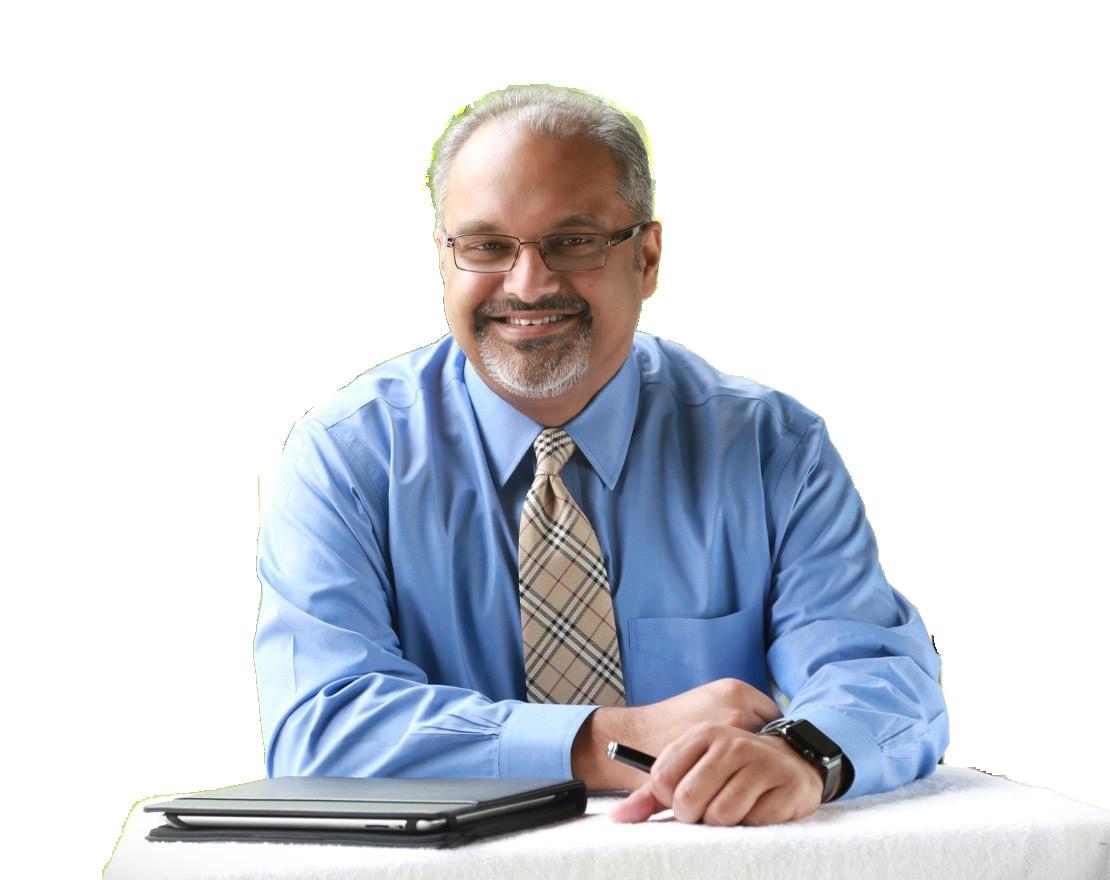
What is your favorite Wisconsin restaurant and what do you order there?
“I am a sucker for good food anywhere, any kind and flavor, so long as it is nice to my palate. I have had some great food in the state of Wisconsin.”
What would people be surprised to learn about you?
“I was a lead vocalist in a pop band in medical school.”
What was your first car? How long did you drive it for?
“My first car was a Honda Accord. I had it for two years.”
If you could take a one-year sabbatical, what would you do?
“I would go to law school. I am fascinated with law. I come from a family of lawyers and judges. I suppose I was the only black sheep who followed a different career path.”
What’s the toughest business challenge you’ve had to overcome?
“The past three years of the COVID pandemic. We are still learning how to navigate and overcome the challenges that stemmed from the pandemic.”
What advice would you give to a young professional?

“Believe in yourself and your dreams. Be confident about where you wish to go and figure out how to get there – it is never a straight path.”
What has been your company’s most significant success over the past 12 months?
“The COVID-19 pandemic changed how people receive care, when and where care takes place, and what they expect from care partners. The lessons learned from the past 12 months and more from this pandemic will stay with us for generations. As I reflect on this time, I am proud. Proud of the communities and the support so many people provided for our health care workers. Proud of the patients and families who trusted us with their health and care. Proud of our dedicated team members. Through the most difficult of times, our teams stood true to our calling to do what it takes
to care for our community. The strength and resilience as one ThedaCare team continues to shine as we pursue our mission to improve the health and well-being of our communities.”
What is one thing you would change about Wisconsin to make it even better?

“We need to talk about ourselves more and let people know what all we have to offer here. This is a great state with tremendous people and resources.”
As you enter your office, what would you choose to be your walk-up or theme song and why?
“’Danger Zone!’ Not because of my office but because of the energy and can-do attitude!”
Is there a nonprofit cause that has special meaning to you?
“I am very much involved with the United Way in our community. I love their focus on financial, education and health stability for the people of our community. Those areas all resonate with me.”
What is the biggest risk you’ve ever taken?
“At the age of 24, I left my home and family back in Pakistan. I came to this country with my wife, a child on the way and no job. I was unsure how it was all going to work out. This is the essence of the American Dream. God has been super kind to me and my family.”
What’s at the top of your bucket list?
“I want to transform health care forever in this country. I am committed to helping people receive the best care in the easiest way possible, in the right place at the right time, and at the price point as they wish to receive it.”
What has you most excited about the future?
“The future is bright and full of possibilities. We must be willing to get out of our own way and let the creativity, innovation and change happen. This pertains to health care, our communities, our lives and the way we will live in the future.” n
8 / BizTimes Milwaukee MAY 1, 2023
Leading Edge
Visit:
This Q&A is an extended profile from Wisconsin 275, a special publication from BizTimes Media highlighting the most influential business leaders in the state.
biztimes.com/wisconsin275 for more.
PUBLIC RECORD
Inside Harley CEO’s potential big payday
 By Arthur Thomas, staff writer
By Arthur Thomas, staff writer
On the surface, Harley-Davidson’s annual securities filing detailing how much its executives make shows Jochen Zeitz was paid $43.3 million in 2022, a big jump from $18 million the prior year.
Around $32 million worth of that pay accounts for Harley stock that Zeitz could receive in the future. However, Zeitz, chairman, president and chief executive officer of Harley-Davidson, will have to return the company to its all-time highest value by the end of 2025 to actually earn or receive most of that compensation.
At the company’s 2022 annual meeting, Harley’s shareholders approved a plan to offer Zeitz up to 1.5 million shares in the company if its stock price could reach several aspirational targets. Another 1.5 million shares are available to other company executives as well.
Here’s a breakdown of how the plan works:
Dec. 31, 2025
Harley’s stock would need to reach certain target values by the end of 2025 for Zeitz and other executives to receive their shares. They would get half at that point and the other half a year later.
$70 per share
That’s the initial threshold for Zeitz to receive any shares. If Harley’s stock reaches that level, he would receive 375,000 shares. The targets are determined based on a 30-day volume weighted average price.
$90,
$110 and $130 per share
Those are the additional thresholds set out in the aspirational incentive plan. Zeitz receives an additional 375,000 shares at each level.
$36
- $40 per share
The price range Harley’s stock has been trading in from mid-March to mid-April.
Twice
The number of times Harley’s stock has reached $70 previously, the first time was in 2006 and the most recent was in 2014.
$5.4 billion
Harley-Davidson’s market cap as of mid-April.
$10.1 billion - $18.75 billion
The potential value of Harley-Davidson at the $70 and $130 per share thresholds based on the current number of outstanding shares in the company.
$195 million
The value of 1.5 million shares in Harley-Davidson stock if it was worth $130 per share. n
Robert Parker
Executive director and chief executive officer
Bronzeville Center for the Arts
2312 N. Martin Luther King Jr. Drive, Milwaukee bcamke.org
Industry: Arts and culture | Employees: 4

• Parker was drawn to his new role at the Bronzeville Center for the Arts because the organization’s mission aligns with his own personal interests and values. “My foundation began at the art gallery on campus (at North Carolina A&T State University). It was the Mattye Reed African Heritage Gallery. I started there and then kind of moved into the history museum space. I got away from art, although art was still a part of the other collections I worked on.”
• He has 25 years of leadership experience in the museum and arts space, most recently working at Harriet Tubman Underground Railroad National Historical Park in Cambridge, Maryland, and then at Chickasaw Heritage Center in Tupleo, Mississippi. “We want to have more engaging experiences for our visitors – basically leave an indelible mark.”

• He wants the entire community to be involved with the process of designing the BCA. “Everyone can’t necessarily donate thousands of dollars, but there are individuals who can donate a couple of hundred dollars, $100 or $50. All that adds up. But how do we make that impactful for that donor too? How do we make certain that they see themselves as making a tremendous impact on this project?”
• Parker believes the importance of art can’t be understated. “Art reflects history and art reflects cultural and political movements. To be able to have opportunities to interpret those stories is what we want to do. I think we’ll be able to do that well if we continue to be strategic in our planning.”
He’s most excited to experience the cultural activities Milwaukee has to offer, from Summerfest to local wineries. “I’m planning to go to the I’ve never been to a city that has one. I love that.”
With breakfast, he takes his coffee with cream and sugar. If it’s with dinner or dessert, black. n
biztimes.com / 9
COFFEE BREAK
Jochen Zeitz
on my nightstand...
TRACY PEARSON President and CEO Perlick Corp.
69.8%
“Straight Up: Real World Secrets to Running a Killer Bar”
By Ramona Pettygrave Shah
TRACY PEARSON, president and chief executive officer of Milwaukee-based manufacturer Perlick Corp., has a deep appreciation for all aspects of owning and operating a bar. That passion has melded into both her work and personal life, including her current read, “Straight Up: Real World Secrets to Running a Killer Bar” by Ramona Pettygrave Shah.


“Being a bar refrigeration and equipment manufacturer, I’m always looking to get a glimpse into the minds of the bartenders and
operators who physically use our products everyday,” said Pearson.
“This book is written by a veteran bartender who shares experiences from her many years in the hospitality industry and gives a unique first-person look at the life of a bartender. She talks through their physical and social challenges and the business management trials they face throughout their workday. It’s engaging and fascinating, but also very insightful and reaffirms the importance of the products we create for this industry.” n

10 / BizTimes Milwaukee MAY 1, 2023
Leading Edge Do brand ambassadors have any effect on your decision to purchase a product? Share your opinion! Visit biztimes.com/bizpoll to cast your vote in the next Biz Poll. YES: 30.2% BIZ POLL A recent survey of BizTimes.com readers. NO:
At Boys & Girls Clubs of Greater Milwaukee we open doors for the youth we serve. Please join us Monday, May 22 for our 2023 Salute to Youth celebration, presented by Johnson Financial Group, for an evening to honor our exceptional community leaders and Boys & Girls Club members The event begins at 5:00 p.m. and business casual attire is recommended. Visit MVPMKE.givesmart.com or text MVPMKE to 76278 to purchase tickets or visit bgcmilwaukee.org to learn more about sponsorship opportunities.
SHOP TALK
How can manufacturers promote a culture of safety?
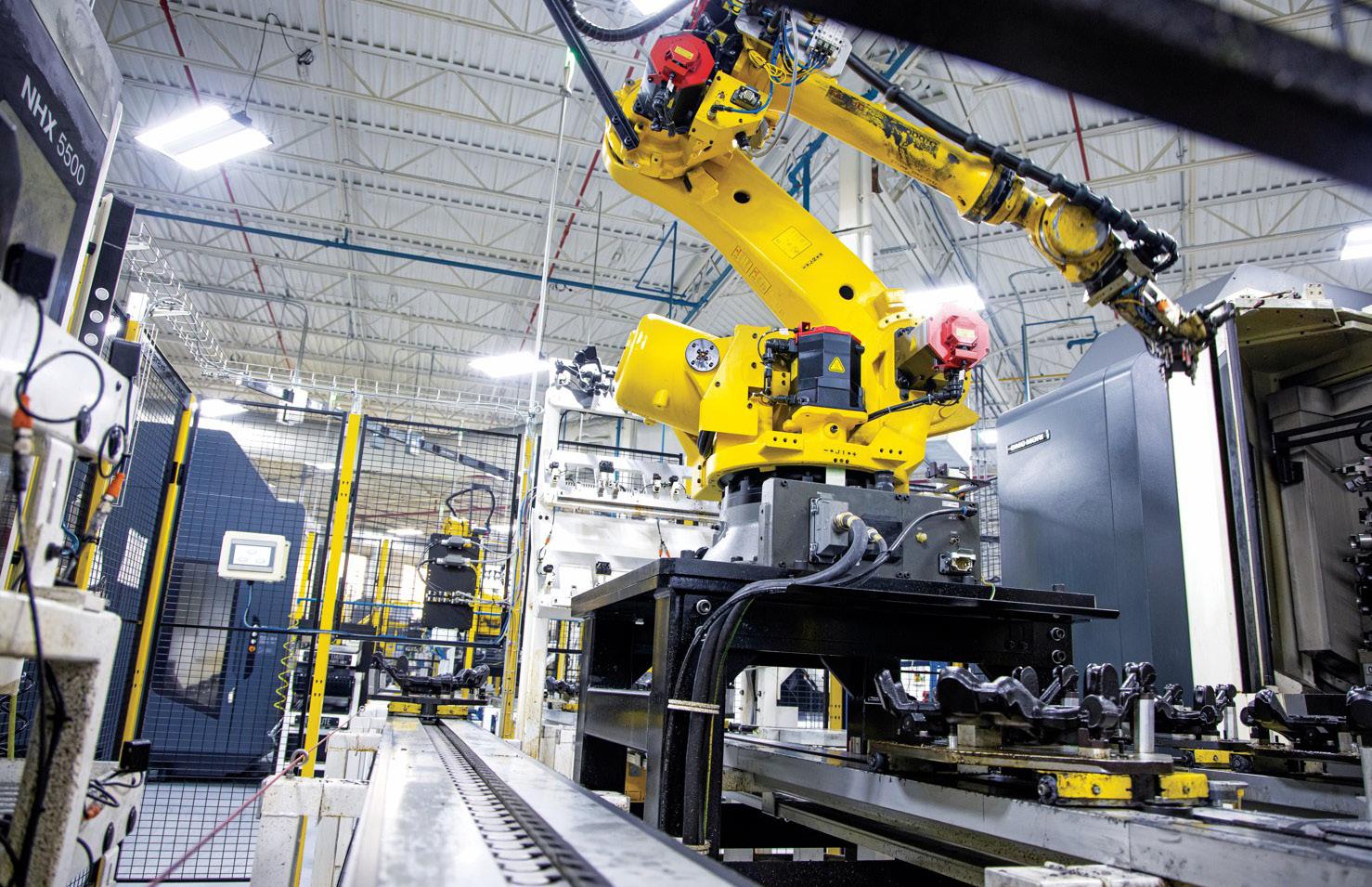 By Ashley Smart, staff writer
By Ashley Smart, staff writer
IF YOU WALK THROUGH a modern manufacturing facility, it’s likely you’ll spot a well-lit, clean and spacious shop floor with hightech equipment that looks like it could easily come out of a sci-fi movie. It can be easy to forget that it’s still a shop floor and the equipment being used can be inherently dangerous if not used correctly.
“At the most basic level, our absolute expectation is that people go home at the end of the day in the same condition they came to work,” said Mike Latwesen, general manager of Grede Holdings’ Menomonee Falls facility. “It seems trite to say that but there are and have been incidents in manufacturing environments where that hasn’t happened.”
Last June, the Southfield, Michigan-based iron casting manufacturer reached one million hours (about four and a half years) without a lost-time incident at its Menomonee Falls location. In July 2022, its Reedsburg facility reached 1.5 million hours without a lost-time incident. In the latter half of 2022, the Menomonee Falls facility did need to restart their lost-time count for a worker with a carpal tunnel injury caused by repetitive use.
Grede cites two key elements in the success of its safety plan: daily safety reviews and its safety
observation program.
Company leadership has been leading daily huddles with employees on the shop floor for more than a decade. At the beginning of every shift, employees review different safety topics. The topics might address a particular incident that occurred at one of the company’s 10 facilities, or they might simply be seasonal reminders such as tips for fire safety month. There is also an accountability board where ideas or topics can be shared by employees.
“We want to encourage people to share their ideas because the people who are on the floor usually help provide the solution to the problem,” said Latwesen.
While it can be easy at times to take for granted employees with decades of experience who already know how to safely use tools and equipment, Latwesen said Grede is cognizant of the fact that younger employees might need some more hands-on training. For each production job on the shop floor, there are job hazard analysis documents that highlight what the risks are. The reports also outline how an employee should interact with a specific part, down to whether that part might have a sharp edge.
Grede has also recently introduced Casting College, a new learning management system that supports worker training with YouTube-style videos and other digital learning options.
“It’s never enough (training) and that’s obviously balanced with the demands of production or the
day-to-day work environment,” said Latwesen. “We hold daily huddles to reinforce the practical application of things that may only be covered in a once-a-year class.”
Milwaukee-based Brady Corp., a manufacturer of labels, signs, safety devices, printing systems and software for workplaces, also has a multi-faceted safety plan in place.

For Brady Corp.’s most recently completed fiscal year, the total recordable incident rate was 0.55. TRIR looks at the number of recordable incidents per 100 fulltime workers during a year.
“Building muscle memory with employees is crucial to system performance,” said Tom DeBruine, vice president of global operations at Brady Corp. “We’d certainly aspire to create an environment where when people see something, they say something.”

Some elements Brady Corp. has put in place include meetings with employees to discuss risk observations, near misses or relatable safety events; third-party assessments of program elements; acceptance criteria related to safety systems in equipment construction contracts; and engagement with the board of directors on performance metrics and specific risk-reduction efforts.
Some Brady employees also receive specialized training,
TIPS FOR MANUFACTURERS:
• Be cautious about slogans, contests, banners and committees as they give rise to cynicism.
• Be real about the level of commitment company leadership is willing to put in when looking at refreshing a safety plan.
• Observation is key. Get out on the floor and take the time to see what’s actually happening.
• Overcommunicate best safety practices and listen to employee feedback.
including lift truck certification for warehouse operators and arc flash and ‘hot work’ training for maintenance employees. There are also annual refreshers on topics related to emergency response, severe weather, unauthorized intruders, safety data sheets, fire extinguisher use and more.
“It’s a total systems approach that includes true transparency on performance, legit engagement and ownership by business and operational leaders, dedicated subject matter resources, formal programs, third-party assessments and, most importantly, direct engagement with people,” said DeBruine. n
biztimes.com / 11 BizNews
Grede Holdings’ Menomonee Falls facillity.
Latwesen
DeBruine
the Interview
IN APRIL, Wauwatosa-based Froedtert Health and Neenah-based ThedaCare announced plans to merge into one health system. After the merger is complete, Cathy Jacobson, Froedtert’s president and chief executive officer, will initially assume the role of CEO while Dr. Imran Andrabi, ThedaCare president and CEO, will serve as president. After a six-month transition period, Jacobson will retire from the organization after more than a decade at the helm. BizTimes Milwaukee reporter Ashley Smart recently spoke with Jacobson about the deal and her forthcoming retirement. The following portions of their conversation are edited for length and clarity.
How does this merger make sense for both organizations?
“It was October of 2022 when we announced our quaternary agreement with ThedaCare and then our joint venture development in Oshkosh and Fond du Lac. At that time, we’d been meeting with ThedaCare for over a year just in terms of opportunities, and we worked on those ideas. As we got a chance to know each other through those conversations, what we recognized was that our conversations were very easy in terms of being able to come to an agreement because we were aligned on so many thoughts. It wasn’t just about academic medicine, which is incredibly important, or it wasn’t just about expansion. What we really aligned around was, number one, a joint vision for how we think health care needs to change.”
What does transforming health care mean to both organizations?
“I think first and foremost, it’s recognition that health care doesn’t
Cathy Jacobson President and chief executive officer

Froedtert Health
9200 W. Wisconsin Ave., Wauwatosa Employees: 17,000 froedtert.com
work for most people today. What I mean by that is you may have access to health care, but maybe you have to wait too long for an appointment, or it’s too clunky for you to schedule, or you don’t understand how to navigate the system. So, maybe once you get in, you get great care but the experiences and the handoffs and the communication and all those types of things are not where they need to be. Transforming means recognizing what we do today is not what people want it to be and not what it needs to be. Then, when you’re in that mindset, you’re immediately thinking of those things that we need to challenge.”
How does this merger benefit the more rural communities served by ThedaCare?
“You can’t deliver health care in a rural setting the same way that you do in Appleton or Milwaukee because there just isn’t the same access to brick and mortar locations. People are on a different schedule, their lives revolve around different things than people in the city, so first and foremost it’s about listening to the community and how health care has worked for them and then asking what tools we can bring. Is it virtual health? Well, we know there’s broadband issues still in some of our rural areas. How do we help bring that to
12 / BizTimes Milwaukee MAY 1, 2023 LILA ARYAN PHOTOGRAPHY BizNews
them? How do we connect them to the best of academic medicine?”
Is this truly a merger, or is it an acquisition?
“My legal counsel would tell you it’s neither. That is why we’re actually calling it a combination. In not-for-profit health care, you literally can take two organizations and just put them together. And that is exactly what we’re doing here. There’s no money exchanged, we’re just taking all of the resources of ThedaCare, all the resources of Froedtert Health and putting them together into a combined organization. Really, what that tells you about how the organization will be run in the future is the governance statement that we put out on the board, which will be composed of representatives of both organizations.”
How did you make the decision to retire following the merger?
“I’m not retiring for 15 months. There’s a long trajectory yet. It’s probably another nine months until we close the transaction. We’re still Froedtert Health and ThedaCare, and we have to continue to do the same things we do every day. Once we’re combined, there will be a six-month transition period where we can bring the organizations together and I will leave.
“My decision on this has been building. Most people who know me know that I’ve never had the intent to work all the way to 65. I’m involved in a number of different things, health care and non-health care related on a national level, and I wanted to do something else eventually. When you feel good about how you can hand off your organization and you meet a leader who is aligned with your vision, you kind of marry the two things up together. To be transparent, I’m 60, so it’s not that far off from my original long-term thinking. It’s just a natural transition.”
Can you share more details on your post-retirement plans?
“I’m on a couple of different boards already, and I have to do that in my spare time on top of my normal job. I want to stay on those boards and maybe look at some other opportunities as well – nothing beyond what I’m doing already. I want to do that and spend some more time with my family.”
Will Froedtert and ThedaCare pursue other acquisitions in the future?
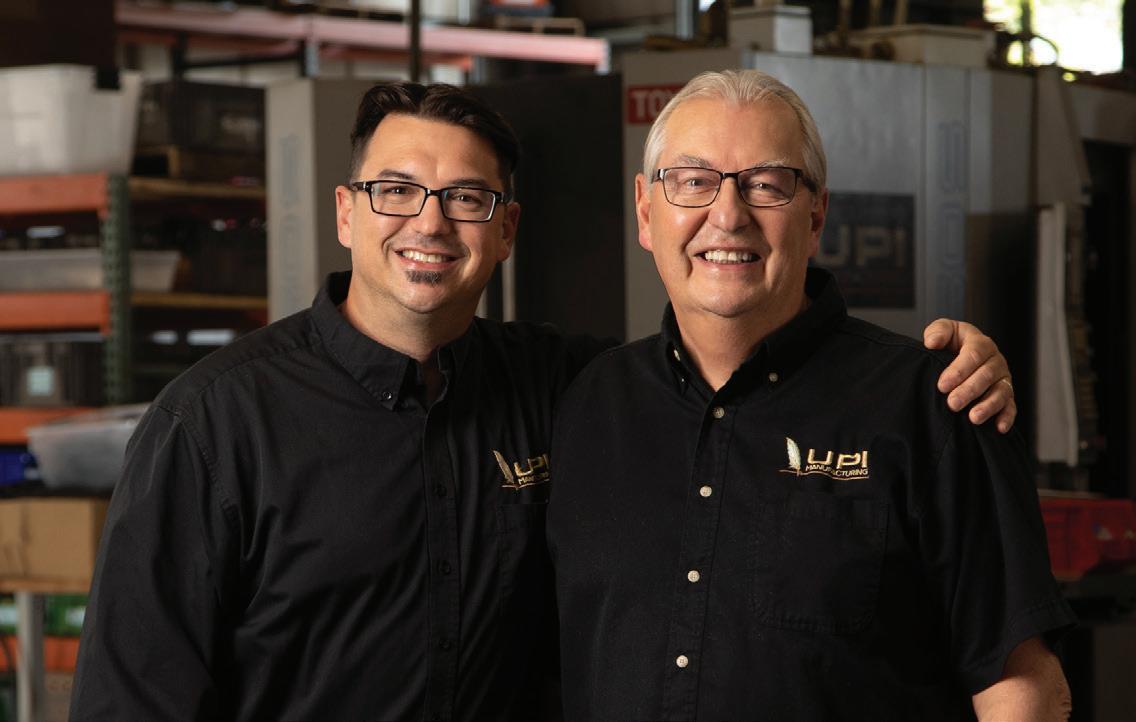
“I really can’t say right now. We’ve got to stay focused on the one deal we have right now. I will tell you we think we are creating something unique in the state in terms of being Wisconsin based and Wisconsin led, and we hope once we get it put together that it is something that attracts partners who want to join us and the work
Understanding and
we’re doing. We are building something for the future that we hope others will see as attractive.”
Are there any worries about getting regulatory approval?
“I would say we’re in an environment where health care combinations are really scrutinized, and we just have to be extraordinarily respectful of that. At the same time, we think we’re bringing two health systems together that don’t really overlap. The only sharing of patients we have are the patients that get referred out of ThedaCare’s geography to come down and access complex care they can’t normally get. We think that is actually the strength of our merger. We’re optimistic and think we’re doing this for the right reasons.”
When were employees notified of the merger?
“We started telling everyone first thing (the morning of April 11). We started telling our teams probably about an hour before the press conference. We were very careful with our messages because first and foremost, we need all of our staff to come take care of patients every single day. That’s what we want them focused on right now. The messages were nothing’s changing, even when we come together and combine.”
Any details you can share about the company’s new name and headquarters?
“I can tell you for sure the headquarters will be in Wisconsin. That’s quite frankly becoming more unique among health care systems. We really, really have not talked about plans beyond that. In terms of the name, we decided both names will live on.” n

biztimes.com / 13
trust
Watch the UPI story to learn more: Member FDIC Equal Housing Lender
The foundation of every Citizens Bank relationship
“Transforming health care means recognizing what we do today is not what people want it to be and not what it needs to be. Then, when you’re in that mindset, you’re immediately thinking of those things that we need to challenge.”
‘‘
Community Within the Corridor developers working to address contamination
Exhaust hoses hang from the second story windows of the East Block of the Community within the Corridor, 3100 W. Center St.
WHEN PLANS for the Community
Within the Corridor began taking shape at the former Briggs & Stratton complex at 32nd and Center streets on Milwaukee’s northwest side, developers, local officials and area residents regarded the project as a hard-won success story, a jewel amidst a largely neglected neighborhood in need of quality, affordable housing.
Little attention was paid by both the media and local officials to what impact previous manufacturing activity at the former engine plant site might have on the $68.5 million mixed-use development, which aimed at turning the 380,000-square-foot industrial campus into a 197-unit apartment development with commercial, community and recreation spaces for residents and neighbors.

As developers Scott Crawford Inc., Minnesota-based Roers Cos., and their environmental consultant KSingh & Associates worked with the DNR on plans to remediate and mitigate any residuals from the property’s former industrial life, would-be residents and project boosters were largely unaware that lingering chemicals could impact their health, or even force them from their newfound homes.
FEATURED DEAL: JUDGE BACKS DEVELOPERS’ PURCHASE OF 100 EAST BUILDING

It’s not how most big real estate deals get finalized, but the ruling of a local judge was the final step that allowed creditors of the beleaguered 100 East office building in downtown Milwaukee to proceed with a deal to sell the 36-story building to developers who plan to convert it into a luxury apartment tower.
In a Zoom hearing on April 12, Milwaukee County Circuit Court Judge Christopher Foley said he had reviewed the “receiver’s motion to sell” and agreed that all efforts had been made to secure the “highest and best offer” for the building, which has been in foreclosure since April of 2021. He then approved the motion, allowing 100 East Propco LLC – a development team led by Milwaukee-based Klein Development and local restaurateur John Vassallo – to purchase the property for $28.75 million.
PRICE: $28.75 million
LOCATION: 100 E. Wisconsin Ave.
SELLER: Hertz Milwaukee 100 East Wisconsin LLC

BUYER: 100 East Propco LLC

Real Estate
14 / BizTimes Milwaukee MAY 1, 2023 LOOPNET.COM
That was until March 24 when more than 150 residents of the East Block of the complex were evacuated after city Health Department officials learned that air in some occupied and unoccupied portions of the building contained concentrations of the chemical trichloroethylene (TCE) that were nearly 200 times above the acceptable “vapor action level” of 2.1 micrograms per cubic meter.
Found in the chlorinated cleaning agents often used to clean metal, TCE can be carcinogenic over long-term exposures, but it poses the highest threat to pregnant women, since acute exposures can lead to fetal heart defects.
In the weeks since, media reports drawing on statements from city officials and publicly available correspondence between the developers’ environmental consultant and the state show that the DNR –which had pushed for several more months for vapor testing in the East Block – had been unaware until late March that people were living in that portion of the property.

While any potential fallout from that revelation remains to be seen, developers say they are working hard to address the contamination problem by modifying the building’s vapor mitigation system (VMS).
Like a radon mitigation system, the VMS is designed to suck any TCE vapors that might emanate from the ground into pipes that are supposed to push the contaminated air into the atmosphere and away from living spaces.
“Over the past several weeks, the (VMS) serving the development’s East Block building has been augmented with additional air blowing capacity, while third-party environmental engineering and remediation teams are addressing the underlying issues and conducting regular testing of air quality throughout the building,” said developers in an April 17 statement.
Those efforts appear to be having some impact on the problem, but a weekly report submitted by a consultant to the DNR showed levels in many parts of the East Block to still be well above
the 2.1 micrograms per cubic meter action level. One first-floor unit had a TCE level as high as 236.6 micrograms per cubic meter on April 13, for instance. And tests done on April 14 showed only one part of the building – a third-floor hallway – with a TCE level below the vapor action level.
Noting that it is “difficult to predict” when East Block residents will be able to return to their apartments, the developers say they are “committed to making that happen as soon as possible.”
In the meantime, they say they are working to help East Block residents with any needs they may have, including free hotel accommodations or stipends for other alternative housing, waiving rent and utility costs and refunding all past rent paid by the tenants.
“The Community Within the Corridor remains a viable development,” they added.
For all the problems unmitigated TCE vapors can create, Trevor Nobile, a field operations director with the DNR, said the chemical is a common one at redevelopment sites and can often be successfully mitigated, including in residential buildings.
TCE vapors were also found in the West Block of the development before development occurred, Nobile noted, but the VMS installed there has required far less modifications to keep operating effectively, Nobile said.
As long as remediation is done right, sites with TCE contamination can be “extremely safe,” Nobile said. n
MUSTARD AND VINEGAR PROCESSOR EXPANDING IN PLEASANT PRAIRIE
Olds Products Co., a processor of vinegar and wet and dry mustards, including Koops’ Mustard, is planning a four-phase expansion of its facility at the LakeView Corporate Park in Pleasant Prairie.
The company built its existing facility in 1995 and has expanded it over time to 266,000 square feet. It currently has 137 employees.

The planned expansion projects would add a total of 260,000 square feet of space to the facility and would increase employment by 60 to 90 additional full-time jobs. Slated to be constructed over the next seven years, the additions would include new silos and space for bulk seed processing, milling and packing seeds, warehousing and other production activities.
DEVELOPER: Olds Products Co.
SIZE: 260,000 square feet
ADDRESS: 10700 88th Ave., Pleasant Prairie
biztimes.com / 15
Advertise in these upcoming special reports to get your message in front of area business executives. Contact Linda Crawford today! Phone: 414.336.7112 Email: advertise@biztimes.com Business in Ozaukee, Washington and Sheboygan Counties Family Business June 5, 2023 June 5, 2023 Space Reservation: May 17, 2023 Space Reservation: May 17, 2023 Including Faces of Family Business thought leadership
BREAKING GROUND
CARA
Reporter P / 414-336-7116 E / cara.spoto@biztimes.com T / @CaraSpoto OLD PRODUCTS
SPOTO
BY MAREDITHE MEYER, staff writer
Restaurants that survived the darkest days of COVID-19 and the restrictions they had to endure during the pandemic are now faced with a different problem: an extremely tight labor market that is making it difficult for many restaurants to operate at full capacity.
After recovering from what, for some, was a near-total loss during the pandemic – with experts initially forecasting the permanent closure of roughly one-third of all U.S. restaurants by the end of 2020 – restaurant operators have endured drastic shifts in diner expectations, yo-yoing demand, supply chain hiccups, surging food prices and overall economic uncertainty.
Underpinning those pandemic-driven hurdles is a labor shortage that has troubled the service industry for years – well before the days of capacity restrictions and mask mandates – and was exacerbated by mass layoffs at the onset of the pandemic and, later, the so-called “Great Reshuffle” of employees leaving their jobs en masse for different positions or industries.
But as the pandemic has gradually faded from the purview of diners and workers alike, restaurants across the U.S. have seen slow but steady job gains since 2021. With more than 192,000 jobs added already this year, according to the U.S. Bureau of Labor Statistics, the National Restaurant Association expects employment to surpass pre-pandemic levels by year’s end.
Still, compared to February 2020, restaurants across the country are down 75,000 employees, or 0.6%, as of March. And the gap is even wider in Wisconsin, with the latest employment numbers lagging by 9,600 jobs, or 4.7%, according to the NRA and BLS.
In the Milwaukee area, diners have seen post-pandemic labor shortages play out in numer-
ous ways over the past two years. Scaled-back business hours from seven to five or even four days a week; limited sit-down lunch options for downtown workers; long wait times for tables when dining rooms are half empty; service fees on bills; help wanted signs in windows; permanent closures.
Meanwhile, local restaurant owners today are working harder than ever to find and hire the right people, onboard and train those new hires and then, most importantly, keep them on board – a task that has become increasingly difficult in the age of increased wage competition and shifting expectations around workplace flexibility. At the same time, inflationary pressure on food, energy and other goods is forcing restaurants to raise menu prices, but not so much as to turn diners away.
“You almost have to battle behind the scenes to really survive in the business right now,” said Eric Wagner, founder and chief executive officer of Milwaukee-based Lowlands Group, which operates European-inspired eateries Café Hollander and Café Benelux.
The challenges facing restaurants are present throughout the industry, from fast food and fast-casual spots to fine dining establishments, but the region’s restaurant groups offer a unique window into the issues. Their operations are much larger than the single-unit independent restaurant, but they don’t have quite the level of corporate infrastructure as the national multi-unit brands.
Now, with labor challenges ongoing, area restaurant executives and workers are gearing up for the busiest months of the year, and what some say will be the first normal summer of business since the pandemic.

16 / BizTimes Milwaukee MAY 1, 2023 COVER STORY
JAKE HILL PHOTOGRAPHY
A look inside the kitchen at The Bridgewater Modern Grill in Milwaukee.

biztimes.com / 17
Long-teRm investments
On a warm, sunny day in mid-April, the rooftop deck at Café Benelux in Milwaukee’s Historic Third Ward hummed with the sound of chatter, utensils on plates, diners placing lunch orders. Carrying large trays of drinks and food, servers and staff carefully traversed up and down the central staircase and floated around tables of midday diners.
The annual arrival of “patio season” in Wisconsin means most of Lowlands Group’s restaurants are gearing up to double in size over the next few months.



“And with that, we need to double the number of employees as well,” said Ileana Rivera, the group’s chief operating officer.
Currently with more than 700 employees across eight properties, Lowlands Group recently announced plans to open two more restaurants –including a brand-new concept dubbed The Feisty Loon – and a bier garden at the 84South mixed-use development in Greenfield later this year, expanding its footprint to nearly 900 employees at 11 locations.
Staffing up for the summer season has become more challenging in the past couple of years, especially compared to pre-pandemic days when, at a spot like Benelux, college students on summer break would be “knocking at our doors” looking for a seasonal gig, said Rivera.
As expectations around work have shifted and students take advantage of remote work opportunities, Lowlands has had to do more outreach through job fairs and social media to reach necessary staffing levels.
As a long-term workforce solution, the group has invested “hundreds of thousands of dollars” to build out its suite of benefits and perks, including the addition last year of paid time off for all employees, health insurance for full-time employees, life insurance, short-term disability, dining discounts and an employee assistance program. The move was in response to feedback gathered from employee surveys during the pandemic.
At Benelux, PTO for hourly employees (after 30 hours of work), has been a boon for retention, said bar manager Kortney Cardoso, who’s been with Lowlands Group for five years, at Benelux for the past two.
When Cardoso first started out as a server in the industry, getting PTO from an employer was unheard of, she said. Since Lowlands Group started offering it, employees feel they have more skin in the game. Health insurance was another benefit Cardoso never expected to get earlier in her career. Today, it’s “something servers are looking for,” she said.
“It’s the small incentives that the company (is offering) and the benefits they’re putting behind it that truly I think is keeping a lot of our staff around,” she said.
COVER STORY 18 / BizTimes Milwaukee MAY 1, 2023
JAKE HILL PHOTOGRAPHY
JAKE HILL PHOTOGRAPHY
JAKE HILL PHOTOGRAPHY
Luca Clesceri runs orders up to diners on the rooftop of Café Benelux.
Diners enjoy lunch on the rooftop of Café Benelux in Milwaukee.
Now, as Cardoso and her team of fellow managers work to increase hourly staff at Benelux from 50 to 80 for the summer, the new array of benefits provides some extra leverage with experienced candidates.
“We’re brutally honest during the interviews, where we will state how high volume we are. We let everybody know that it is not an easy serving job, but it’s worth it,” she said.
The investment, albeit steep, is worth it from the employers’ perspective, too. Hiring and retaining better people means – in the long run – less training, lower expenses and better run restaurants, which is why Lowlands’ employee benefit offerings are here to stay and will only continue to grow, said Wagner. The executive team has a long list of other requests it plans to implement going forward.
Ultimately, that means the company will need to continue driving sales, and leadership will need to keep a watchful eye on the balance sheet.
“On top of inflation, on top of all these costs, this is another one that isn’t really inflation driven, it’s just additive,” said Wager. “We’re looking at our business a lot more closely than we ever have.”
RebuiLding in phases
For Milwaukee-based PIE Inc. regaining full strength has been a slow and deliberate process. Today, the company has about 85 employees across its four restaurants – Honeypie, Palomino Bar and SmallPie in Bay View and Comet Cafe on the East Side – with the goal of reaching its pre-pandemic employee count of 110 by year’s end, assuming sales stay on pace.
To fill the gap, PIE Inc. has devoted more resources than ever to its recruiting and hiring efforts, and leadership has taken a more active role in the process.
“Not that we were lackadaisical about it in the past, but we really got a lot of (job candidates) who targeted us, gave us their resumes, applied online,” said Valeri Lucks, founding partner and chief executive pie officer.
Last year, the group created a new role solely dedicated to reviewing applications, conducting interviews, staying in touch with potential candidates and onboarding new hires. In the past, those tasks made up a portion of an admin role or were shared among the leadership team.
“We really had to put some serious gas behind
it,” said Lucks.
And it’s paid off.
“We’ve made so much progress in this area that I’m thinking it will continue to be in someone’s job, but I don’t think it’s going to need to be the only thing this person does going forward,” she said.
Lucks also attributed the company’s incremental hiring success to its new pay model, which launched in summer 2021 to create a non-discriminatory tip pool for all employees. Under the One Fair Wage model, front of house wages increased from $2.30 to $10-$12 an hour, leveling out with back of house pay, and all tips made by front of house workers are now split equally among the staff. Beyond increasing overall pay for kitchen staff, the shift has boosted morale and fostered teamwork.

“In the past, if we were getting our rear ends handed to us during Sunday brunch, the kitchen didn’t see more in wages. They would get frustrated and burned out by it, and now because they can see that it’s going to benefit them as well, it builds a stronger team,” said Lucks.
However, it hasn’t made up for all of the chefs,
biztimes.com / 19
JAKE HILL PHOTOGRAPHY
Kortney Cardoso (third from left) with Café Benelux wait staff (left to right) Matthew Tucker, Dillon Hunter, Clay Prather, Dani Rink and Cassandra Coffey.
cooks and dishwashers that have seemingly exited the industry since the pandemic, leaving understaffed kitchens in their wake.
“Our goal is to have everybody make $20 per hour or more – dishwashers included – and that’s a drastic leap in pay to what it was in 2019,” said Derek Petersen, executive chef and managing partner at PIE Inc. “We were paying dishwashers $9 or $10 an hour with no tips, and now they’re making double that amount and we still can’t find anybody.”
When a kitchen is down people – which Petersen said still seems to be on a weekly basis – he or other executive team members and managers will step in to work the line, wash dishes and run food rather than expecting those on shift to pick up the slack or calling in employees who were not otherwise scheduled.
“We do whatever is needed to get through,” said Lucks. “We‘ve worked so hard to build these teams that I don’t want to burn them out and lose them.”
There were times, earlier in Pie Inc.’s rebuild, when the need to retain employees meant adjusting the business on a larger scale. Take for instance last summer, when Palomino Bar closed down for six weeks so staff could devote their full attention
to getting Comet Cafe up and running by winter. As a main driver of business for the group, the concept took priority, but not at the expense of employees.
“Our last hurdle now is we’re trying to get Tuesdays back open again,” said Lucks. “We need two more chefs and until we get those two chefs, we just won’t open Tuesdays so as to not burn others out or lose out on them.”
CuLtuRe shift
Benson’s Restaurant Group initially saw a similar pattern as it worked to restaff the kitchens at its five downtown Milwaukee locations, Onesto, Blue Bat Kitchen, Smoke Shack, AJ Bombers and The Bridgewater Modern Grill.
When Steve Gustafson moved from Louisville to Milwaukee in 2021 to take a job as executive chef of the group’s then-soon-to-open Bridgewater, he found himself asking where all the chefs and cooks had gone.
“I think some people got worried about whether there was going to be jobs anymore,” said Gustafson, speculating on the back-of-house labor shortage. “I think a lot of people just assumed restaurants were going to go away and then got out of the business.”
Or another possibility – thanks to the widespread rise of remote work – culinary workers who’d grown weary of long shifts on their feet were drawn to other jobs that could be done fully from the comfort of home.
It’s been six months since the upscale-casual dining concept opened at the R1VER development in Milwaukee’s Harbor District and both the kitchen and dining room are fully staffed. Gustafson was recently promoted to regional executive chef, with Stephen Kovak taking over as head chef at The Bridgewater.
Benson’s is nearly back at full staffing levels with 350 to 400 employees as of mid-April, but that number will increase to about 600 this summer between seasonal hires and the opening of a sixth restaurant location, The Edison, in Milwaukee’s Historic Third Ward.

“The labor market is waking up,” said Mike Besson, director of restaurant development for Benson’s. “In the post-COVID environment, people are getting back to work.”
The group is receiving more applications these days than it has in the past three years and the overall quality of candidates is the strongest it’s been over that time. Any remaining gaps in staffing “have to do with normal attrition and not
COVER STORY 20 / BizTimes Milwaukee MAY 1, 2023
Comet Cafe on North Farwell Avenue in Milwaukee.
these huge shortages that require us to close half a dining room all the time,” said Besson. “We’re not having to do that.”
The key going forward is maintaining those levels; building a positive, inclusive culture plays a big role in that, Besson said.
“The most important thing is as we hire managers, we encourage them to always treat people with respect and dignity,” he said.
That workplace philosophy may seem obvious or even rudimentary, but it hasn’t always been prioritized within the restaurant industry. He pointed to popular TV shows like “Kitchen Nightmares,” where British celebrity chef Gordon Ramsey is often shown yelling expletives and barking orders at operators and their workers. That type of toxic environment often portrayed by Hollywood was once commonplace but is no longer acceptable in the eyes of employees, said Besson.
As executive chef, Gustafson sets the tone for the rest of the kitchen staff by cooking alongside them every day. Not only does that allow him to spend time doing what he loves most about the job, but it also builds mutual respect among the team.
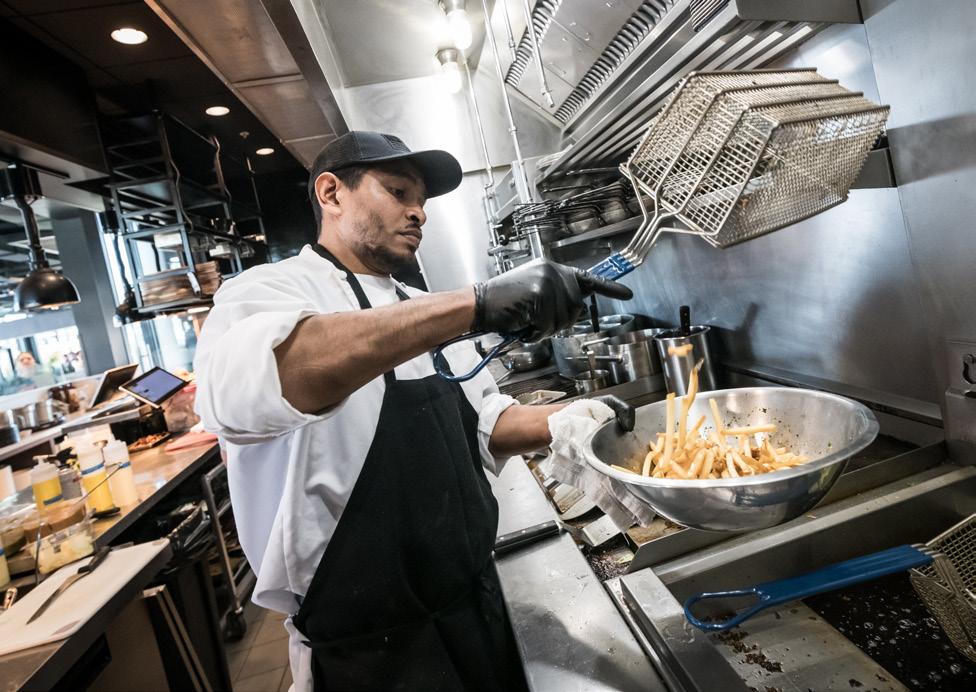

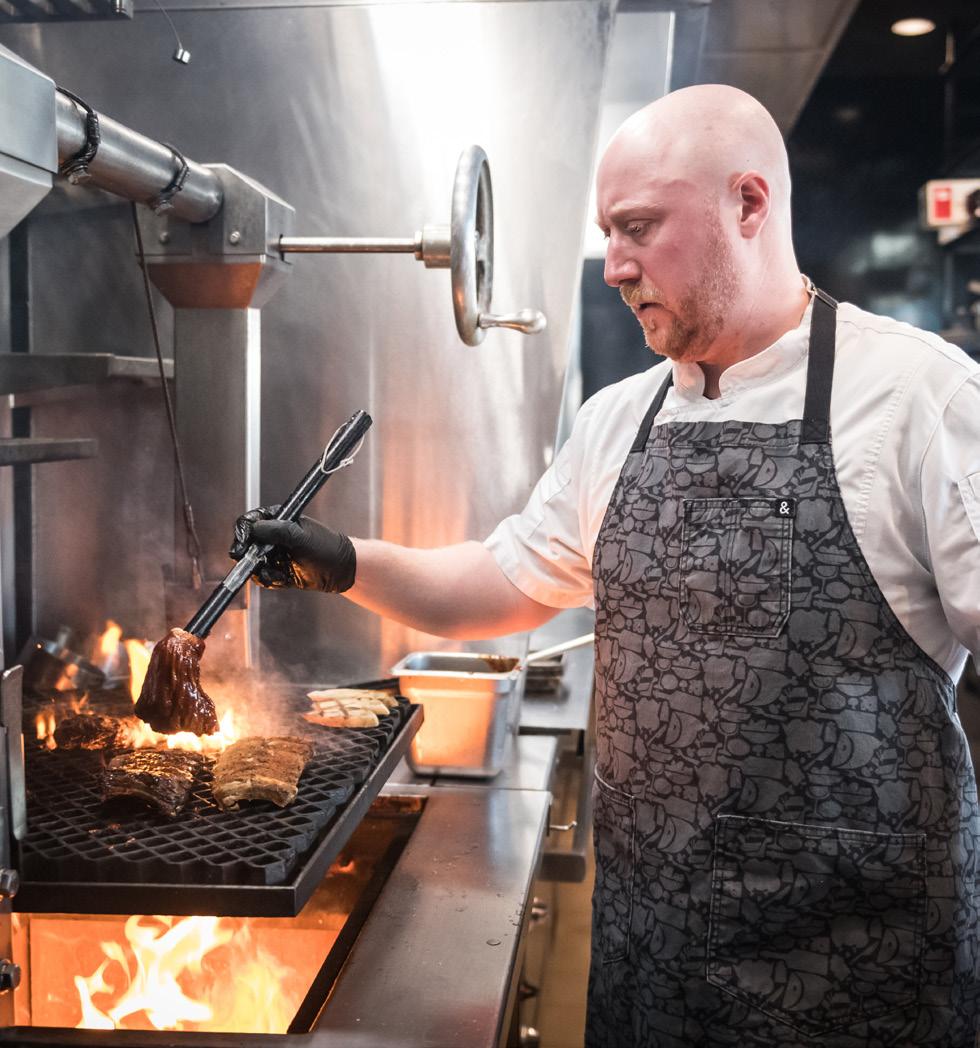
“They get to know me personally, they get to know my style,” he said. “And then I can train them all personally the best I can. … They all get

biztimes.com / 21
Stephen Kozak (left), executive chef at The Bridgewater, and Steve Gustafson, regional executive chef at Benson’s Restaurant Group.
Kozak sears ribs on the oak-fired grill.
A line cook prepares an order of French fries.
Gustafson adds garnishes to plates before they are served.
JAKE HILL PHOTOGRAPHY
to cook and work with me, and I think that’s the best part about it, you get to know them at the end of the day.”
Gustafson said it’s up to companies like Benson’s to continue working to shift the idea of worklife balance for back-of-house employees.
“There’s this perception of chefs that all we do is work 70 hours a week, we don’t have families, stuff like that,” he said. “That’s where I think as companies, and as companies grow, we need to rebuild that, that that’s not what it’s like anymore. We all work hard, but we all have lives outside of work and families that we need to attend to, too.”
how muCh is too muCh?
An unintended consequence of post-pandemic workplace culture shifts – particularly when it comes to more flexibility for employees – is perhaps less accountability.
It’s something Katie Hill has observed lately among her peers as a full-time server at Blue’s Egg in Milwaukee. She’s worked in the local restaurant industry for 22 years – the past 12 for Blue’s Egg operator Black Shoe Hospitality – and said the day-to-day work of taking care of diners has not changed much since the pandemic, and neither has her passion for the job. What has changed, however, are dynamics between management and staff, she said.
“It seems as though (management) can’t enforce attendance and punctuality policies that we
used to … because of staffing issues,” she said.
Prior to the pandemic, if employees exceeded the limit of how many times they could be late or call in sick, they would lose their job. Now, with labor in short supply, there’s much more leeway, which can be aggravating to those who consistently show up – and show up on time, said Hill.
Beyond the annoyance, it creates logistical issues for those on shift.
“I might get an extra table, or the section is a little bit bigger, and it can be a harder day because your workload is a little heavier,” said Hill. “And then there’s all the extra side work to help with because you’re missing a body, so it definitely affects the day. Am I making more money? Yes. But it makes for a more difficult shift.”
These new workplace dynamics could stem from what Black Shoe Hospitality co-owner Dan Sidner considers a “very real change in the mindset” of the next generation of workers, who may not view work in the same way previous generations have.
“My generation and certainly the generations before me defined themselves by what they did professionally,” said Sidner. “I think an awful lot of younger people are like, ‘I do what I have to do to make a living so that I can be available for life and do what I want to do.’ I can’t prove that with any statistics, but that’s the impression that I get from talking with the younger staff members.”
In addition to Blue’s Egg, Black Shoe operates
Maxie’s, Story Hill BKC and Buttermint Finer Dining & Cocktails, which opened in late 2021 in Shorewood. As of mid-April, the group’s total employee count was about 175. That’s only about 25 people below pre-COVID numbers, but there’s still a sizable labor gap given the drastic shift in the ratio of full-time to part-time employees.

“Pre-COVID, we were about 60:40 full time to part time and now that has flipped. … We’re still pretty short staffed just because people are working fewer shifts,” said Sidner, adding that many career professionals, from servers to managers, left the industry and have yet to return.
That trend has begun to reverse for Black Shoe, thanks in part to increased wages – by at least 20% for all employees – and the move last year to bulk up benefits for full-time employees, adding dental, vision, disability and life insurance as well as 401(k) matching to existing health insurance coverage.
“The standard of living or income for our teams is decidedly better,” said Sidner.
But in an industry with historically tight profit margins, there’s a ceiling – and it’s determined by the consumer.
“The only way we’ve been able to pay people that much is we keep raising our (menu) prices,” he said. “We’re definitely at the point now where we can’t raise prices anymore, we will lose business. Everybody is stretched and everything is more expensive.” n
22 / BizTimes Milwaukee MAY 1, 2023 COVER STORY
Blue’s Egg on North 76th Street in Milwaukee.
BLACK SHOE
HOSPITALITY
Capitalize on an opportunity; build a long-term partnership
THE CONSTRUCTION INDUSTRY is built on relationships. General contractors must build a foundation of trust with clients, architects and subcontractors. When considering the key elements to building successful project partnerships across the industry, each opportunity starts with a chance and grows a level of trust through communication and follow through. Honesty and integrity throughout a collaborative process supports successful projects and leads to the long-term relationships valued within the industry.
A chance
Almost every successful industry relationship starts with a chance. Whether it is an architect, general contractor, or sub-contractor, it is about connecting with the right contact who can open a door for an opportunity. A personal connection, the right price or the right timing, a previous relationship gone wrong or new leadership looking for new partners may provide this chance. Then, teams need to rise to the occasion and make the most of the opportunity.
Building trust
Building trust with clients and other project partners relies on communication and follow through. It is about the performance of every team member and how they succeed and fail together. Build trust by:

» overcommunicating – keep everyone informed.
» being open and honest.
» taking a team approach - don’t point fingers.
» owning mistakes and making them right.
In the end, it is about every person who touches a project having the same care and compassion to see the vision and go after it.
Project success & long-term relationships
For Campbell Construction, a 16-year relationship with NAI Greywolf started with a chance. A personal connection and bid opportunity opened the door. A collaborative team approach, constant communication and consistent performance have delivered successful project outcomes and maintained this valued partnership over the years.

“When I am looking for project partners, cost is a consideration, but I also look at who has done their homework and is taking the nuances of a building into consideration, so they will stand behind their pricing,” says Marilyn Herzberg, president of NAI Greywolf. “I am looking for a team that can understand my perspective as well as handle unusual requests or unforeseen complications. Honesty, integrity and communication are important to me.”
Visit campbellconstructionbbg.com to learn more about Campbell Construction’s portfolio of work. n

biztimes.com / 23 Sponsored Content
CAMPBELL CONSTRUCTION (262) 436-4760 CAMPBELLCONSTRUCTIONBBG.COM
JAY CAMPBELL President/Founder Campbell Construction
Digging deeper into SBA lending
ARTHUR THOMAS, staff writer
THE U.S. Small Business Administration has several programs to support business growth and provide access to capital. Two of the most popular are 7(a) loans and 504 loans. Combined, those programs provided $787.2 million in lending in Wisconsin during fiscal 2022 across 1,345 loans. While the total lending figure was down from more than $1 billion in fiscal 2021, it is still above the pre-pandemic amount of $500 million to $600 million annually.
The 7(a) and 504 programs may both be common SBA programs, but they each have distinct uses and their own eligibility requirements.
7(A) LOAN PROGRAM
A 7(a) loan can be used for a number of situations, including both long- and short-term working capital, on a revolving basis, to purchase equipment, furniture, fixtures or supplies; to purchase real estate, including land and buildings; to construct or renovate a building; establish or acquire a business; or to refinance existing debt.
The 7(a) program has a loan maximum of $5 million, although express loans are capped at $500,000. Loan maturity maxes out at 25 years
for real estate and 10 years for equipment, working capital or an inventory loan. Interest rates can be variable or fixed and are negotiated with the lender, although the SBA caps them based on loan size and duration.
For Wisconsin loans in fiscal 2022, the average term was a little more than 12 years and the average interest rate was 5.78%. The average rate climbed from 5.15% in the first quarter to 6.63% in the fourth. For the first quarter of fiscal 2023, which covers October to December, the average was 8.04%.
Wisconsin 7(a) loan volume in the first quarter was similar to the same time in fiscal 2022 (228 loans versus 231 loans), however, total lending was down almost 12.5% from $139.4 million to $122 million.
504 LOAN PROGRAM
While the 7(a) program loan can be used for a variety of uses, a 504 program loan is somewhat more limited to the purchase of existing buildings or land, new facilities, improvement of land, streets, utilities, parking lots, landscaping and existing facilities, and long-term machinery and
equipment.
The 504 program loan cannot be used for working capital or inventory, consolidating, repaying or refinancing debt or speculation or investment in real estate.
The maximum loan in the 504 program is $5.5 million. The eligibility requirements also require a business to have a tangible net worth of less than $15 million and net income of less than $5 million after federal taxes for the two years before the application.
The 504 loan itself comes from a certified development company or CDC. Racine County Business Development Corp. and Madison-based WBD Inc. are the two in southern Wisconsin. Of 134 program loans in southeastern Wisconsin in fiscal 2022, WBD did 109 and Racine County Business Development did 19. The 504 loan would typically cover 40% of a project while another loan from a third-party lender covers 50% and the business puts in about 10% of the project cost as a down payment.
Wisconsin lending activity in the 504 program slowed in the first quarter of fiscal 2023 with 45 loans in the period, down from 110 at the start of fiscal 2022. Total lending on the SBA portion of those loans dropped from $86.9 million to $44.9 million and the third-party portion declined from $121.8 million to $63.4 million. n
Ozaukee, Racine, Sheboygan, Walworth, Washington and Waukesha counties. Banks are listed based on their rank for project lending and number of loans amongst all lenders supporting projects in the region.
Special Report SMALL BUSINESS 24 / BizTimes Milwaukee MAY 1, 2023
7(a) Program Lender Loan Total Number of Loans Waukesha State Bank $22,331,200 28 Byline Bank $24,783,000 17 Community State Bank $8,641,900 25 Summit Credit Union $7,788,800 17 Old National Bank $12,007,300 11 The Huntington National Bank $5,886,900 16 Bank Five Nine $5,337,400 12 Live Oak Banking Co. $11,166,500 7 U.S. Bank $3,228,900 35 Oostburg State Bank $3,753,100 9 Associated Bank $2,898,300 9 BMO Harris Bank $4,292,800 4 Readycap Lending $4,108,200 4 CenTrust Bank $6,170,000 3 National Exchange Bank and Trust $3,443,700 4 Wisconsin Women's Business Initiative Corp. $1,695,000 12 Bank First $2,669,700 5 Cleveland State Bank $2,919,200 4 Citizens Bank $1,559,300 9 Newtek Small Business Finance $2,316,500 5 504 Program Third Party Lender Third Party Loan Total SBA 504 Loan Total Number of Loans Old National Bank $10,741,625 $9,011,000 11 BMO Harris Bank $13,069,806 $10,011,000 9 Summit Credit Union $7,969,500 $7,103,000 10 Bank Five Nine $8,250,300 $6,537,000 9 Waukesha State Bank $7,851,100 $7,089,000 8 National Exchange Bank and Trust $8,231,200 $6,705,000 8 Citizens Bank $6,243,530 $5,031,000 6 Westbury Bank $3,658,200 $3,016,000 4 Johnson Financial Group $3,828,648 $3,153,000 3 Tri City National Bank $3,421,750 $2,782,000 4 Town Bank $2,431,950 $1,968,000 7 Bank First $2,476,500 $2,024,000 4 Wisconsin Bank & Trust $3,588,875 $2,614,000 3 CIBM Bank $3,933,000 $2,871,000 2 North Shore Bank $2,667,500 $2,060,000 3 Americana Community Bank $5,545,000 $3,419,000 1 Byline Bank $2,153,000 $1,451,000 3 Pyramax Bank $2,266,661 $1,867,000 2 Spring Bank $2,199,000 $1,812,000 2 Bank Of Wisconsin Dells $3,465,500 $2,903,000 1
SBA lending in southeastern Wisconsin for fiscal 2022: These are the top lenders to Wisconsin-based borrowers for projects in Kenosha, Milwaukee,
Culture: A compelling how-to story
WHAT
IS CULTURE?
The term is often used to describe a collaborative vision, passion, or common goal. Without culture and without a common sense of purpose, it is difficult for any organization to succeed.
In October 2014, InvestorsBank ownership sold the bank to American Bank. Leadership of American Bank went to great lengths to share and develop a common culture.
Early in the transition process, American management deployed a dedicated, on-site individual whose primary purpose was to talk with each employee about the Bank, its culture, and a commitment to doing the right thing for the client.
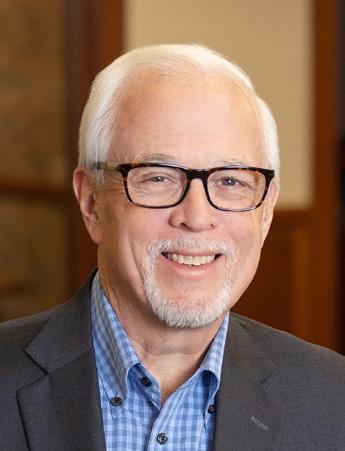
Often, employees of the acquired entity fill the void created by a lack of communication with a narrative that in most cases is incorrect. Through early engagement of each employee, uncertainties about the transition were diminished.
The investment and commitment by the acquiring entity to execute thorough and frequent communication delivered via one-on-one and team conversations was key. As the two banks continued to work collectively, the
culture and collaboration solidified resulting in a very successful merger where the client base and staff of the two organizations were retained.

In December 2016, American Bank merged with National Exchange Bank & Trust. The two banks were both owned by NEB Corporation, a privately-owned family corporation. Despite having shared ownership, the two organizations had different cultures.
Once again, leadership worked together to merge the two organizations and evolve with a common purpose embellished by the fundamentals developed over many years.
Today, National Exchange Bank & Trust is one of the strongest community banks in the state of Wisconsin. It is a collective common purpose and a collaborative culture that drives the Bank forward resulting in its success. The Bank is a testament to the benefit and development of a strong culture and common purpose.
To learn more about how the strong culture of National Exchange Bank & Trust impacts our relationships with customers through integrity, trust and excellent customer service contact us today. n
biztimes.com / 25 Sponsored Content
NATIONAL EXCHANGE BANK & TRUST (262) 523-5726 NEBAT.COM
RICHARD (DICK) S. HENSLEY President - Southeast Wisconsin National Exchange Bank & Trust
The franchise brands that are tapping into Milwaukee
BY MAREDITHE MEYER, staff writer
FRANCHISE BUSINESSES in Wisconsin this year are projected to increase by 0.9% to a total of 15,220 units, adding approximately 3,193 new jobs, according to the International Franchise Association’s annual economic outlook report. With franchise activity on the rise across the state, here’s a look at some of the national brands that are actively expanding, new to market or eyeing up southeastern Wisconsin for future growth.
EXPANDING
Taco John’s: The Cheyenne, Wyoming-based “West-Mex” chain plans to expand its Milwaukee-area footprint to nearly 15 stores in the coming years through Fargo, North Dakota-based franchisee Pentex Restaurant Group. Since early this year, the brand has opened new-build locations in West Milwaukee and West Allis, with a third planned in Milwaukee. Previously, Taco John’s Waukesha store was the only one in the area. National store count: 370+
Dave’s Hot Chicken: Under a deal with Milwaukee-based Roaring Fork Restaurant Group, the fast-growing Nashville-style hot chicken chain will open 14 locations over the next six years in Milwaukee, Racine, Kenosha, Green Bay and the Fox River Valley. The first Milwaukee-area location opened in 2022 in Menomonee Falls, followed by others on Milwaukee’s East Side and

Kenosha. National store count: 100+
Crumbl Cookies: The gourmet cookie chain has taken Wisconsin by storm since one local franchise group introduced the brand to the market in 2021, opening 12 stores in the span of a year. In southeastern Wisconsin, the Utah-based brand now has stores in Delafield, Oak Creek, Pleasant Prairie, Germantown, Grafton, Sheboygan, Menomonee Falls, Brookfield and Greendale. National store count: 791
Cheba Hut: The marijuana-themed “toasted” sub shop brand entered the Milwaukee market in 2021, with a restaurant near UW-Milwaukee’s campus. Local franchisees Heather Gawlitta and Robert Huhn opened their second area location earlier this year in the city’s Bay View neighborhood and plan to open a third as part of a threeunit deal. National store count: 45
PayMore: The chain of stores that buy, sell and trade electronics entered the Midwest market last year under a multi-unit deal with local franchisee Tim VenHause. He opened his first store in West Allis and plans to open additional locations in the coming months. National store count: 12 open, 77 in development
NEW TO MARKET
7 Brew: The drive-thru coffee company’s first Wisconsin location opens May 11 in Brookfield.
It’s one of three area locations in the works for 7 Brew’s local franchise group, with additional stands planned in West Bend and Mount Pleasant. National store count: 70+
Zoom Room: The indoor dog training facility opened in West Allis earlier this year as the chain’s first Wisconsin location, owned by local franchisee Lisa Formicola. National store count: 90

Crisp & Green: The Minnesota-based fast-casual chain, serving up build-your-own salads, will soon make its Wisconsin debut, opening five locations in the Milwaukee area. The planned expansion is part of a 40-unit development deal with franchisee Rory Kelly of Salads & Smoothies LLC, also based in Minnesota. Crisp & Green said in late February that it was in the site selection process for its local stores. National store count: 30 open, 50 in development

TARGETING SOUTHEAST WISCONSIN
Storm Guard: Fort Worth, Texas-based roofing and construction company said late last year that it’s targeting Wisconsin due to the uptick in severe weather. The company is looking for two franchise partners to expand into the Milwaukee area. National count: 39
Fitness Premier: With a unit already under construction in Sheboygan, the chain of fitness studios is looking for a local owner to introduce the brand to the Wisconsin market. National store count: 18
Miracle Method: The kitchen and bathroom remodeling company, with existing locations in Madison and Muskego, is targeting Kenosha as its next growth site. National store count: 160+ n
26 / BizTimes Milwaukee MAY 1, 2023 Special Report FRANCHISEES
Dave’s Hot Chicken
Zoom Room
Crisp & Green
Choosing the right business banking partner
IVAN GAMBOA Senior Vice President | Chief Commercial Lending Officer Tri City
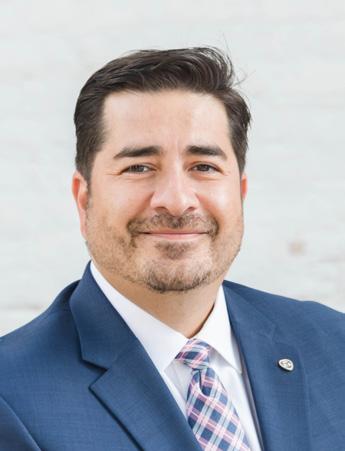

HAVING THE RIGHT BUSINESS banking partner is a critical component to helping your business thrive. Whether you’re a startup, established company, or a growing business, you need an impactful business banking partner to reach your full potential. Here are five tips to help you make the right choice.
Personalized Service
Having a banker that you know and trust can be a valuable asset. They are often someone you turn to when you need a referral for other business services, like accounting, legal or insurance. Additionally, they’ll advise you on options for financing, should your business need capacity solutions. Ask your business network for referrals; this will be a good way to see how connected your banker is.
Priceless Market Knowledge
While our digital world makes many of our daily tasks easier, there is no replacement for someone with knowledge of the local market. A good banker will know your community, and how your business can be positioned to best meet your community and customer needs. Business bankers from community banks live and work in the areas they serve, giving them an upper hand on the pulse of local happenings.
Nimble Decision-Making
As the old saying states, “time is money.” Smaller community banks are quicker to meet your needs, due to the aforementioned market knowledge. Larger banks with layers of out-of-state management will be slow to provide you with the timely answers you deserve. When considering a bank, ask about its approval process and what decisions your banker has the authority to make.
Product & Service Suite
Traditional banking products include everything from different loan types -- real estate loans, lines of credit, assisted financing options -- to checking and savings options. Most banks will provide these basic services, and you’ll want to know if they have any specialized solutions for your industry. Additionally, you may benefit from fully utilizing business banking services like remote deposit capture, positive pay or merchant services. Make sure your bank has a robust suite of tools for all your business needs.
Track Record of Success
Simply put, you’ll want to ensure your bank is positioned to weather an economic storm. One indicator is how that bank has performed through economic booms and busts, from the Great Recession through the post-pandemic recovery. Does your bank have a strong balance sheet? Does it provide flexibility for business customers when times are tough?
Your business will have ups and downs, and you’ll want a bank— and a business banker – that is there to support you through it all. n
biztimes.com / 27 Sponsored Content
TRI CITY NATIONAL BANK (414) 874-2489 TCNB.COM
National Bank
Member FDIC
Taking your leadership to another level at BizExpo
By BizTimes Staff
BIZEXPO, the premier business event in the Milwaukee region bringing together local business decision-makers to learn and network, returned May 1 after a two-year hiatus. Presented by BizTimes Media, the event kicked off with Elevate Your Leadership, a keynote event sponsored by Ixonia Bank and featuring Tim Kight, founder and chief executive officer of Focus 3, an advisory firm that helps organizations develop leaders and strengthen their culture.
In a Q&A ahead of the event, Kight shared insights on what it means for leaders to be intentional with their actions and how best to control their response in challenging situations.
BizTimes: What does it mean for leaders to be intentional with their actions?
Tim Kight: “Being intentional means being thoughtful, focused and strategic in the actions that a leader takes. There are a number of areas where it is essential to be intentional.
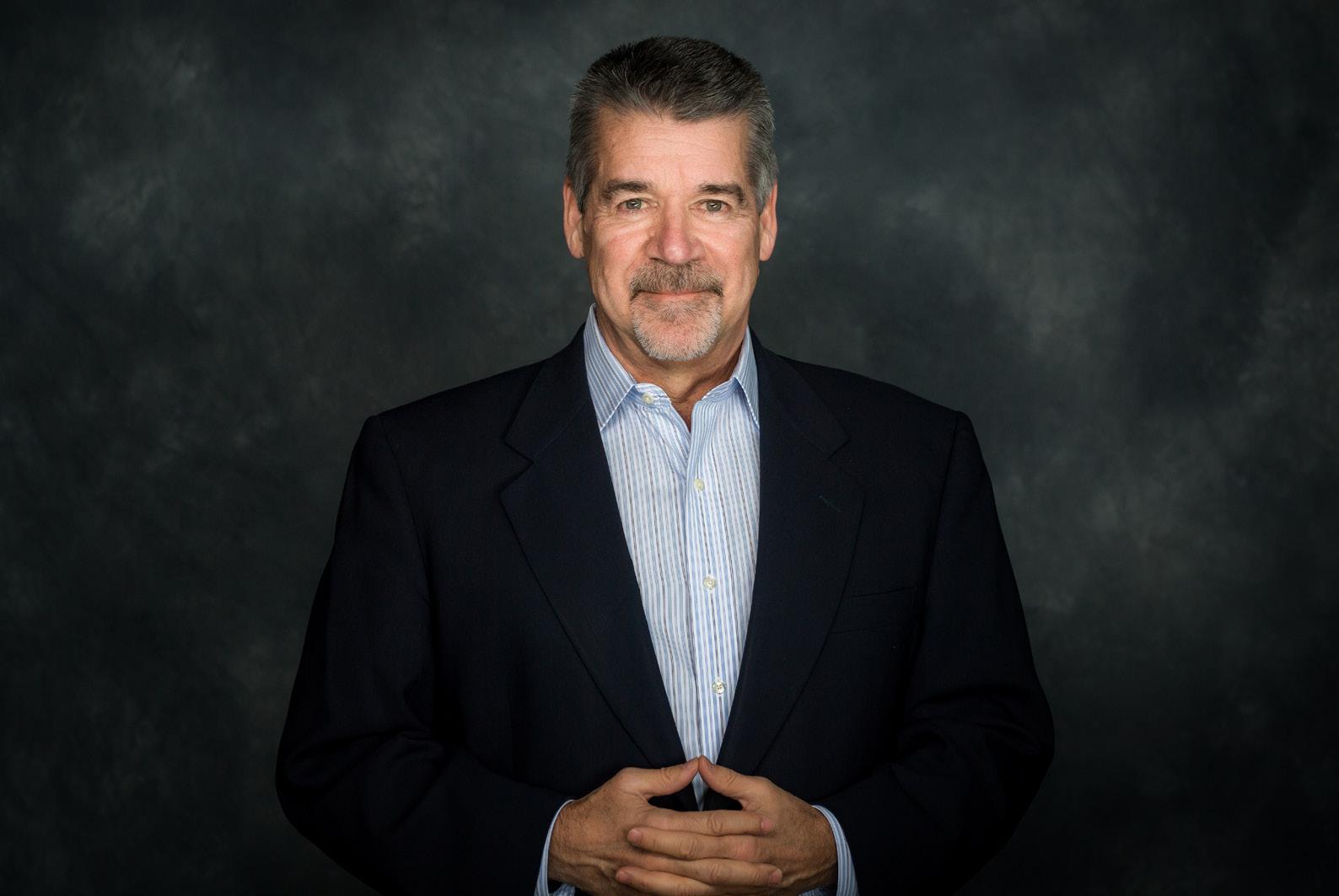
“First, be intentional about building the culture. You don’t get the culture you proclaim; you get the culture you practice, promote and permit. Second, be intentional about communicating the vision and strategy and clarifying expectations. Associates need (and want) to know where the company is going, how it is going to get there and what is expected of them. Third, be intentional about building and earning trust. Everything a
leader does is built on a foundation of trust. Not authority, trust! Fourth, be intentional about holding people accountable and providing support. Accountability should be positive and productive, not punitive. Support should be focused on equipping and inspiring people to do the work you have assigned them to do. Fifth, be intentional about building and developing other leaders. A company performs based on the effectiveness of its leadership. Not just leadership at the top, but leaders throughout the organization.
“Finally, be a student of your numbers. Know your key performance indicators, what they mean and the key drivers that produce them.”
Do many people think they are being intentional when they are not?
“It’s a matter of self-awareness, and that is a real challenge. This is why candid feedback is so important.”
At which level of an organization are leaders most challenged to be intentional?
“All levels must be intentional. A frontline leader who is impulsive rather than intentional will create problems.”
What are one or two keys to taking ownership of your response to events or issues in your business?
“Number one is to press pause and think. Your first reaction is rarely your best response, so slow down and give yourself space to think and gain clarity. Number two is to ruthlessly eliminate BCD (blame, complain, defend). Don’t fixate on problems, and never complain. Elite leaders don’t complain; they solve.”
How can leaders maintain a positive and productive culture while still providing negative feedback when necessary?
“Build trust, speak truth and be respectful. Lead by example and live the culture.”
How can leaders sustain changes they want to make to their own habits while still meeting daily demands and deadlines?
“Every leader is on a journey. It’s not about perfection, it’s about progress. Be authentic. Leverage your strengths, acknowledge your weaknesses and get a little better every day. Let people in your organization see you grow. Operate from a foundation of integrity, courage and humility.” n
Keynote Sponsor:
Ixonia Bank is pleased to sponsor the Elevate Your Leadership presentation at BizExpo, where you’ll learn the best leaders are intentional about the way they think, make decisions and take action.
If you’re looking for a banking partner that is a proven leader in growing businesses, consider Ixonia Bank. We know the challenges and opportunities unique to Wisconsin’s business landscape. You deserve to experience the benefits of community banking at its best—fast decision-making, customized solutions, local expertise, and responsive, and flexible service.
Whether it’s obtaining funding for expansion or managing seasonal cash flow, the experts at Ixonia Bank know what it takes to take your company’s growth to the next level. In addition to a full-suite of commercial banking solutions, we offer personal banking, loans, and wealth management services. Ixonia Bank was established in 1918; since then, the Bank has grown to over $600 million in assets and offers services at seven locations throughout Jefferson, Milwaukee, and Waukesha Counties. We’ve been around for 105 years and plan on being here for the next 105. We’re not going anywhere. Learn more about us at IxoniaBank.com.
28 / BizTimes Milwaukee MAY 1, 2023
Special Report BIZEXPO EVENT COVERAGE
Tim Kight
WE’RE ALL BUSINESS.
$8,100,000 Working Capital & Real Estate Financing
$4,200,000 Acquisition Financing Utilizing SBA Programs

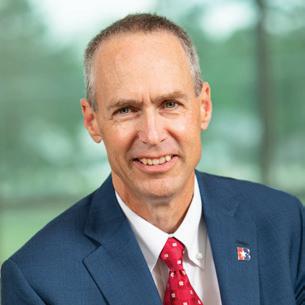
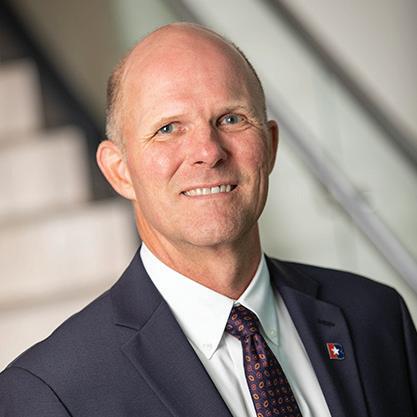


$3,900,000 Capital Expenditure Financing for Growth
$3,500,000 Acquisition Financing Utilizing SBA Programs
$2,900,000 Partner Buyout & Working Capital Financing

$1,950,000 Working Capital Financing
$1,605,000 Industrial Manufacturing Acquisition
$1,400,000 Working Capital & Real Estate Financing
$1,050,000 Storage Facility Construction

$733,000 Succession Plan & Working Capital Financing
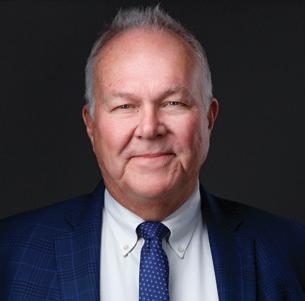

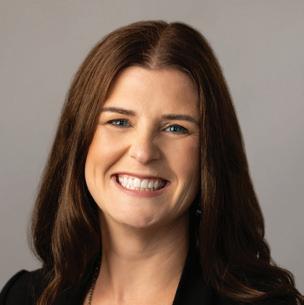
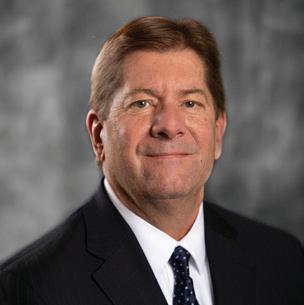

$695,000 Mixed Use Construction
$430,000 Working Capital Financing
$178,000 Affordable Multi-Family Acquisition
Milwaukee County 414.763.2428 | Waukesha County 262.567.7509 | Jefferson County 920.206.2000
Member FDIC Equal Housing Lender
Patrick Lubar Vice President Tyson Goecks Vice President Steve Kirst Assistant Vice President
Cassandra Crandall Treasury Management Alex Fisher Commercial Banking Officer
The
Greg Larson Chief Executive Officer Mark Wierman President Dennis Sampson Director of Commercial Banking Business People
Steve McGuire Senior Vice President
Business Bank Run By
Experienced. Capable. Predictable. Responsive. All things you expect from your banking partner when navigating complex transactions. Ixonia Bank provides innovative financing solutions that exceed expectations.
Don’t miss
Presented by:
Monday, May 1, 2023 | 10:30am - 5:30pm | Brookfield Conference Center
LEARN NETWORK CONNECT
Join Milwaukee-area professionals on May 1st for a daylong event focused on connecting business executives to information and resources crucial for business growth.
The day will kick off with Elevate Your Leadership, a keynote presentation where attendees will learn to lead with intention, purpose and skill. Following the keynote, the exhibit floor opens and the business strategy seminars begin. The day concludes with the Power Hour networking reception.
BizExpo brings together local business decision-makers to learn, network and connect with service providers and suppliers from throughout Wisconsin. Plan now to be part of BizExpo, southeast Wisconsin’s largest business-to-business experience.
10:30am - 11:45am
| KEYNOTE PRESENTATION | ELEVATE YOUR LEADERSHIP
Lead with Intention, Purpose and Skill | Tim Kight, Focus 3
11:45am - 5:30pm |
EXHIBIT HALL
Keynote Sponsor:
CONNECT with industry leaders, expand your business network, and support the local business community while discovering new products and services.
360 Direct, Inc.
4C For Children, Inc.
Actinion
All Energy Solar
Associated Bank
Best Electric Service
Better Business Bureau
Bevara Building Services
BizTimes Media
Blackhawk Capital Partners
Brew City PC, LLC
Campbell Construction JC Inc.
Dash Development Data Holdings
Discover Brookfield – Town of Brookfield Tourism Department
DORAL
Employee Health Centre, LLC
Ethoplex
First Citizens Bank
Full Sail Leadership Academy
Geronimo Hospitality Group
Gramoll & Associates, Inc.
Granville BID/EDC
Hausmann Group
humanworks8
Hunzinger Construction
Imperial Service Systems
Innovative Signs Inc.
Johnson Financial Group
Lauber Business Partners
Lisbon Creek Systems
Living As A Leader
MalamaDoe - A Coworking Community for Women
Marcus Theatres
MC Services
Metropolitan Milwaukee Association of Commerce (MMAC)
Minuteman Press Brookfield
NAI Greywolf
NARI Milwaukee
Network Health
Noffke Roofing Co LLC
Northwest Side Community Development Corporation
Olive Promotions
Port Washington State Bank
RCS Commercial Interiors
Real Time Automation, Inc.
Renewal by Andersen
Risetech Partners
Saturn Lounge
Sherman Phoenix Foundation
Sign Art Studio
Source TEN
Stamm Technologies
SustainableHR PEO and Banana VOIP
SVA Certified Public Accountants S.C.
Technology Innovation Center
The 20 MSP / BLOKWORX
Third Coast IT
Thrive Architects LLC
Trinergy Health LLC
Visit Brookfield
Waident Technology Solutions
Waukesha State Bank
We Energies
WhirlyBall
Wisconsin Black Chamber of Commerce, Inc.
Wisconsin Women’s Business Initiative Corporation (WWBIC)
Yellow Letters Complete
4:30pm
- 5:30pm
NETWORK at the Power Hour cocktail reception. Stay for the prize drawings.
| POWER HOUR NETWORKING RECEPTION PRICING:
ALL ACCESS PASS | $55
•
•
•
BIZEXPO PASS | $25
•
Tim Kight
•
•
•
*As of 04.24.23
Includes access to:
Keynote presentation: Elevate Your Leadership with
All Business Strategy Seminars
Exhibit Floor
Includes access to:
Power Hour Networking Reception
All
Business Strategy Seminars
Exhibit
Floor
Power
Networking
Hour
Reception
LEARN at 10 Business Strategy Seminars focused on insights and best practices to run your business better.
The Six B’s of Balanced Leadership Six strategies to achieve effective leadership
Presented by: Living as a Leader
CyberSecurity - Important steps to safeguard your company from today’s threats
Learn to protect your data so you can sleep at night
Presented by: MC Services
Supporting your sustainability goals
Learn how energy audits can improve efficiency and savings
Presented by: We Energies
Financial

Strategies To Help You Start, Manage and Expand Your Business
Tips to keep your business successful
Presented by: Johnson Financial Group
Exit Planning Options: Internal Sale, External Sale, Private Equity - Is an ESOP Right For You?
Tax efficient exit strategies
Presented by: Blackhawk Capital Partners
Going Beyond the Press Realese: How to Connect with the BizTimes Editorial Team
How to make your news newsworthy
Presented by: BizTimes Media
Strengthening Your Organization’s Strategic Advantage: Building a Smart and Healthy Culture
Why a Healthy Culture is now a business imperative
Presented by: Lauber Business Partners
Live Leadership Lens with Marquette University President Mike Lovell

Hear Omar Shaikh’s insights on leadership and decision making
Presented by: BizTimes Media
Demystifying OpenAI / CHATGPT and why Google is scared!
Learn to leverage artificial intelligence (AI), CHATGPT, OpenAI, content development, and research tools.
Presented by: BizTimes Media
Securing the Future: Navigating the Intersection of Technology Management, Cybersecurity, and AI
How Artificial Intelligence is Impacting Organizations
Presented by: The 20 MSP
Seminar Sponsors:


Connectivity Sponsor: Lanyard Sponsor:

REGISTRATION AVAILABLE ONSITE | BIZTIMES.COM/BIZEXPO Brookfield Conference Center | 325 S. Moorland Road 12:00pm - 4:30pm | BUSINESS STRATEGY SEMINARS
ROOM A 12:00-12:45 PM 1:15-2:00 PM 2:30-3:15 PM 3:45-4:30 PM ROOM B ROOM C
REGISTER TODAY! | BIZTIMES.COM/BIZEXPO
Drinking the CIDER
A 5-step problem-solving process
Editor’s note: The following is an excerpt from the book “Live As A Leader: Tools and Inspiration to Transform Yourself, Your Team, and Your Life,” by Aleta Norris, Nancy Lewis and John Rutkiewicz.

WE ARE ASKED often to help leaders become better problem solvers and decision makers.
We believe that one of the best tools for helping yourself and others become better problem solvers and decision makers is to have a process for problem solving. Such a process breaks problem solving into steps that others can learn and follow. It also gives us a framework to know where people struggle and, therefore, where we can help them. The problem-solving process we’ll share is called CIDER.
CIDER is an acronym that represents the five steps in our problem-solving process. If you were to do an internet search of problem-solving processes, you’d find dozens of them. Some are four steps, seven steps, eleven steps. Yet, regardless of how many steps we break the process into, all versions follow the same overarching flow of key concepts.
The five steps of CIDER are:
• Clarify the problem: Focus on understanding the real problem completely, rather than focusing simply on symptoms. Define the desired state.
• Identify ideas and possibilities: Delay the selection of solutions by actively seeking other ideas, possibilities and alternatives to consider (brainstorming).
• Decide on actions: Weigh the ideas that have been generated, along with their implica-
tions and potential impact on others.
• Execute the plan: Put the decisions and actions into play, and include timelines and deadlines.
• Review and evaluate outcomes: Gauge the results of the actions taken and their effectiveness at bringing about the desired state. Return to earlier steps as necessary.
Next, we’ll dig into each step in more detail.
CLARIFY THE PROBLEM
One of the keys to good problem solving is to spend adequate time and energy in this first step. The more we invest in clarifying the problem and the desired outcome, the better our results generally are. People who struggle with problem solving and decision making can quickly become much better by simply learning how to clarify the problem effectively. One reason: Effectively clarifying the problem makes the next step much easier, sometimes even effortless – it’s the brainstorming step.
IDENTIFY IDEAS AND POSSIBILITIES
Two things about this step: We often shortchange our brainstorming and discovery of new ideas, possibilities and alternatives. Let’s make our exploration active and intentional. Second, this is a creative-thinking step, where the only goal is to generate ideas. It’s not a time to criticize or analyze – only to brainstorm a variety of possible actions and solutions. Critical thinking about those ideas happens next.
DECIDE ON ACTIONS
In this step, we narrow down our options. This step reminds us to think critically about the pros and cons of our ideas and their possible consequences and impact before pulling the trigger. And remember: Solving a problem (especially a complex one) often entails multiple decisions and actions. There is usually no “magic bullet.”
EXECUTE
Take action! Here’s where we try things. Problem solving and decision making is often about
running experiments – placing bets on and then testing solutions that you think might solve the problem.
REVIEW AND EVALUATE OUTCOMES
While the five elements of CIDER are presented as sequential steps in a process, the process of problem solving isn’t usually linear. For example, as you execute your actions, you may learn something new that provides a fresh idea for solving the problem. Or, as you review and evaluate outcomes, that step might lead you to decide on a new action you can take. Problem solving is an iterative, holistic process – not always linear or logical.
One final thought: This problem-solving process may seem plain and even obvious. That’s likely because, as a good problem solver yourself, you already follow these steps, intuitively and automatically. But remember: We also need to help others be better at problem solving and decision making. Having a process like this helps you to frame it for others, to teach and guide them on how to do it, so you can help them build their own capacity, insight and mental models for how to tackle problems. n
ALETA NORRIS
Aleta Norris is a partner and co-founder of Brookfield-based Living As A Leader, a leadership training, coaching and consulting firm. She can be reached at ANorris@ LivingAsALeader.com. Learn more about her book at: livingasaleader.com/book.
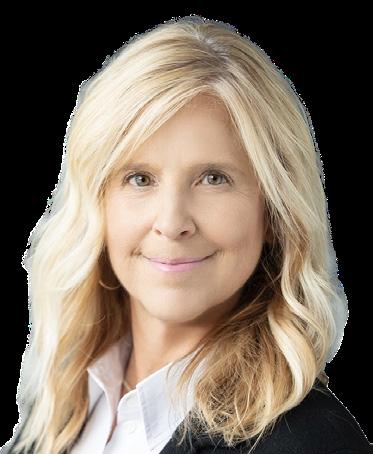
32 / BizTimes Milwaukee MAY 1, 2023 Strategies COACHING
How mentoring builds leaders
ONE OF THE HIGHEST priorities of leaders is to develop the people around them.
Sustaining and growing a business takes more than just strong sales, smooth operations and impressive financials. Developing a team of high-performing emerging leaders is critical. Many skill-building tools and training resources can help.

The most interactive and effective method for leadership development, however, comes from executive coaching or mentoring.
A good mentor is someone, usually from within the company, who has seasoned experience in the roles and responsibilities of others who also want to become leaders and need to improve their leadership skills.
When things are working well, a mentor can help the mentee with job performance, more effective communication and a greater sense of purpose and satisfaction. Mentoring focuses on the needs of the mentee, which builds a stronger connection within the company.
WHAT THE BEST MENTORS DO
1. Build trust. Structure your relationship around common interests, shared values, mutual respect, clear communication and collegiality.
2. Be open and honest. People make mistakes and learn best from their failures. Through transparency, a mentor shares personal setbacks, and a mentee recognizes mis-
takes. It deepens their understanding and connection and normalizes the working relationship.
3. Humanize the relationship. Move beyond titles. Know the mentee as a whole person, including strengths and weaknesses, aspirations, values, coping skills, interpersonal relationships and how they interact with others. A mentor must also learn what makes the mentee tick, without judging. Place the relationship above the mentorship.
4. Focus on character. Beyond cultivating a mastery of job skills, the best mentors also know it’s essential to build character and integrity within the mentee. That includes improving soft skills such as respect for others, empathy and self-awareness.
5. Commit to success. The purpose of mentoring is to help the mentee develop, evolve and grow personally and professionally. Both sides must keep their commitments.
6. Explain the big picture. A mentee’s ideas, passions and foresight could lead to greater creativity and innovation. A trusting mentor offers support but also helps the mentee understand whether his or her thinking is practical and realistic.
7. Ask for proof. Whether you’re discussing a topic or a problem, your mentee must come prepared with facts to support conclusions that address risks, options and alternatives.
8. Pass the torch. A mentor typically has a vast reservoir of “tribal knowledge.” Help the mentee with things like managing distractions and understanding office politics.
9. Define the ground rules. The best mentoring relationships depend on clear rules that address meeting times, scheduling, structure and flexibility. Together, create an outline of matching expectations, your vision for success, long-term goals, mentee preparation and accountability. Confidentiality is critical.
10. Create a focus-forward plan. The mentor and mentee should each define their goals and needs. Identify things like new skills,
an expanded network, significant opportunities and challenges, difficult conversations, or any other important issues where mentoring can provide the greatest help.
EXPERIENCE IS EVERYTHING
The mentor and mentee set goals, address challenges and recognize progress. The mentee must be willing to pinpoint solutions, measure risks, perform under pressure and learn along the way. Mentoring flourishes when the mentor and mentee each gain something powerful.
The relationship should be based on “this is where we started, this is how far we have come, and this is where we are going.”
Genuine curiosity and honest conversations drive novel solutions. Decades of evidence show that positive mentoring relationships build not only leaders but a culture of trust, greater commitment, and higher employee retention.
Where there is great knowledge, there is also great responsibility to share this expertise and wisdom with those who will eventually take charge. To teach is to learn twice. n
GEORGE SATULA
George Satula is an executive leadership coach working primarily as a group chair with Vistage Worldwide — a private advisory board for CEOs, presidents and other top business executives. He is also a leadership development consultant, strategic planner and speaker. He can be reached at George@SatulaUSA.com.

biztimes.com / 33 LEADERSHIP
And a culture of trust, greater commitment and higher employee retention
HUMAN RESOURCES AND MANAGEMENT
Bad job interview questions
Are your hiring managers putting your company at risk?
IN THIS EXTREMELY competitive labor market, many employers are interviewing candidates to fill open positions. Some companies use outside contractors as recruiters to locate and screen potential job candidates. Others have in-house hiring managers to perform those functions.
Are your hiring managers or recruiters properly trained on the questions to ask during a job interview? If not, they can put your company at risk. They act as agents for your company and if they ask inappropriate questions during interviews, they could expose your company to claims of discrimination based on age, sex, race or other protected categories.
Here are some examples of actual questions posed to members of the Lumen Christi Employment Network during a job interview. Many of these questions are inappropriate, not job related or possibly illegal. The results of this survey of applicants raises the question: Do your representatives have clear guidelines for how to properly conduct an interview that will obtain the information you need to make the correct hiring decision? What standards has your company established to ensure you gather the information needed to make an informed hiring decision?
THESE QUESTIONS ARE TOO NEW AGE:
• If you were a tree, what kind of tree would you be and why?
• During an interview with a health and beauty company, a candidate was asked “what shampoo do you use?”
• How are M&Ms made?
• How do you feel about working in a department of all women?
• How much money have you stolen from your last job?
• Give me an example of when you lied, cheated or stole from a job.
• We all procrastinate. Give me an example of how you procrastinate.
• If you were an animal, what kind of animal would you be and why?
• Tell me about your family.
• What historical figure would you like to meet and why?
• Did you receive a COVID-19 vaccine?
THESE QUESTIONS ARE SOMEWHAT JOB RELATED, BUT QUESTIONABLE:
• What was the hardest thing you ever had to do on a job and why was it so hard?
• Why did you leave, lose or quit your last job?
• What have you been doing since you have been unemployed, or since your last job?
• Give me a two-minute summary of your resume.
• What have you done that is not on your resume?
• Give me an example of what you would not be good at doing on this job.
• Why is it taking you so long to find a job?
• What kind of job would you not be good at?
• How would you deal with turnover in your department? (The follow-up question to ask the interviewer is, “Why? Is there a problem with turnover?”)
• Where do you see yourself in five years if you do not get this job and if you do get this job?
Attorney Mark Goldstein of the Goldstein Law Group S.C., said most of these job interview questions are examples of the interviewer trying too hard to be personable, creative or witty, none of which serve the company. First, many companies have long since given up on this approach, finding that it simply did not lead them to the best candidates. Second, to the extent these individuals are
serving as agents of your company, make no mistake that they are inviting significant legal exposure to your door.
To protect your company from potential claims of discrimination and project a positive image in the community, you want your representative to be able to collect the information needed to identify the best candidate. To achieve this goal, you need to collect only the necessary job-related information that can defend your decision.

I engaged several highly experienced human resource professionals in this discussion and their suggestions support the need for clear guidance for the individual conducting the interview. This guidance should be in the form of a list of job-related questions that they would like the interviewer to pose to each candidate. There should also be suggested follow-up questions designed to probe further into the candidate’s job experience. It may also be an opportunity to provide this training to any team member who interacts with job candidates.
By taking this proactive approach, the employer is ensuring that each candidate is being asked the same questions and all information being collected will support and potentially defend your hiring decision, should a challenge arise. n
CARY SILVERSTEIN
Cary Silverstein, MBA, is a speaker, author and consultant, a former executive for Gimbel’s Midwest and JH Collectibles, and a former professor for DeVry University’s Keller Graduate School. He can be reached at csilve1013@aol.com.
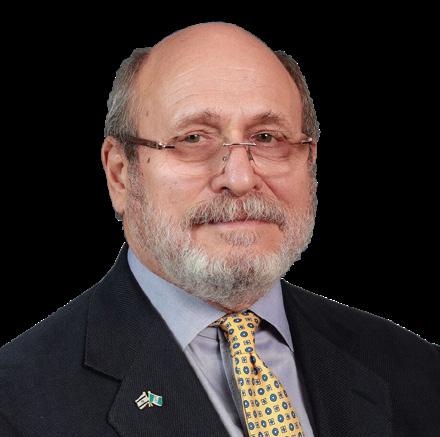
34 / BizTimes Milwaukee MAY 1, 2023 Strategies
Tip Sheet
Advice for providing negative feedback
It would be nice if leaders and managers never needed to provide negative feedback to employees. The reality, however, is that tough conversations are often necessary for both an employee and an organization to grow. Not providing negative feedback can harm an entire team or company because it sets the tone for what
behavior is acceptable.
Brooke Vuckovic, a clinical professor of leadership at Northwestern University’s Kellogg School of Management, provided tips for delivering negative feedback in a recent webinar and those tips were highlighted in an article on Kellogg Insight.

PREPARE WITH PURPOSE
For starters, it is important to prepare in advance for the conversation. Specifically, Vuckovic suggests identifying the “big-P” and “small-p” purpose of the conversation. Think of the Purpose as identifying why the conversation needs to take place beyond the issue that needs to be corrected. The purpose, on the other hand, is better thought of as your goal for the conversation. Vuckovic recommends focusing on what you can control –communicating the issue clearly, setting a specific follow-up date – versus something outside of your control like employee behavior changes.
Advertising Section: New Hires, Promotions, Accolades and Board Appointments
NONPROFIT
CONSTRUCTION
CFI Welcomes

Steven DeVougas as Vice President of Legal and Compliance
Steven DeVougas joins the Centers for Independence (CFI) as Vice President of Legal and Compliance. In this role, Steven oversees and directs the agency’s compliance program and legal affairs. He also ensures that the agency complies with regulatory and contractual requirements.
Steven is an attorney with 15 years’ experience in administrative law, labor & employment, business litigation and transactions, and commercial real estate. He was the founder and principal attorney of DeVougas Law Group, LLC in Milwaukee and a graduate of the Marquette University Law School.
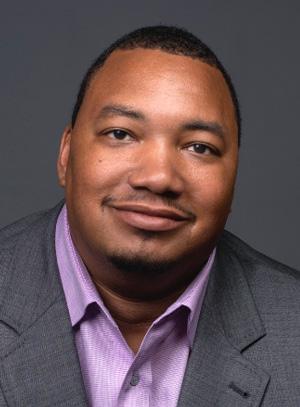
Hunzinger Welcomes Maggie Pinnt as New Business Development Director

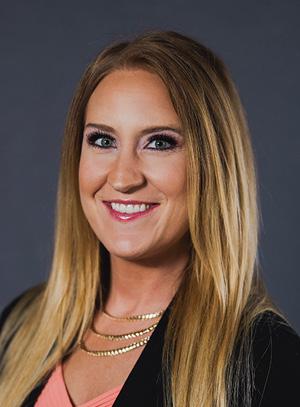
Hunzinger has hired Maggie Pinnt as Dir of Business Development. A grad of Carroll University in public relations and communications, Maggie spent 7 years at BizTimes Media, specifically focusing on Construction and Manufacturing. She brings a deep knowledge of the SE Wisconsin business community and looks forward to working with new clients to drive Hunzinger’s growth and develop new market opportunities. “I am excited to be a part of a company with such a storied history that is recognized for its quality, integrity and ethical conduct”. She sits on advisory boards of GPS Ed Partners, CVI, & MKE Co. War Memorial.
EXPECT TO GET NEW INFORMATION
When you’re providing feedback, there’s a good chance new information or perspectives will emerge. Vuckovic suggests expecting that to happen will leave you better prepared to address it. Consider how an employee’s version of events might be different or how you may have contributed to an issue by ignoring other behaviors or not setting clear expectations.
YOU HAVE TO LISTEN
Providing feedback is not only about delivering a message. Ultimately, the goal is to change an employee’s behavior for the better. To make changes, employees often need to feel heard, which means providing a chance for a response. Vuckovic recommends using a “looping” strategy of paraphrasing the response back to the employee and asking if you’ve understood correctly and repeating this until both sides have a solid understanding. n
biztimes.com / 35
PEOPLE
BIZ
BizPeople Highlight a new hire, promotion or accolade and share it with readers throughout southeastern Wisconsin. Visit biztimes.com/bizconnect to submit your news!








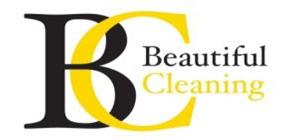






36 / BizTimes Milwaukee MAY 1, 2023 BizConnections AWARD WINNING LEADERS IN ENVIRONMENTAL SUSTAINABILITY PROGRAMS AND WASTE MANAGEMENTS SOLUTIONS www.enviro-safe.com Germantown, WI | (262) 790-2500 | info@enviro-safe.com N New 30,000 Sq. Ft. Addition • Great Customer Service • Continuous Growth • Transportation Services • Family Owned & Operated Since 2002 • Sustainability Programs • Compliance Services (WDNR, EPA & DOT) Contact Pavlic Vending to get your market today! Variety, convenience and healthy foods… all at no cost to your organization! 262.574.1600 | www.pavlicvending.com The Patriot Gear Patriotic and 2nd Amendment Gear for men and women. (414) 745-6829 thepatriotgear.com thepatriotgear@yahoo.com Commercial, Residential & Post-Construction Cleaning 262-317-1003 beautifulcleaning.com “Passion and Commitment to Excellence” Owner kathysshadeshop.com 9034 W. National Ave. West Allis, WI 53227 Kathy Fucile Owner Phone: 414 • 321•1850 Fax: 414 • 321•5999 kathysshadeshop.com Business Hours: Mon. - Fri. 9:30 - 5:30 Saturdays 9:30 - 1:00 - Custom Window Treatments - Commercial and Residential - Repairs of most Shades and Blinds SHARE YOUR PRODUCT/SERVICE OR ADD YOUR BUSINESS CARD ADVERTISE IN THE MARKETPLACE SECTION TODAY! Contact Advertising Sales for rates and specs. advertise@biztimes.com or 414-336-7112 GET THE WORD OUT! News? Press Releases? Awards? Show them off in BizTimes’ new BizUpdates section. Submit your company news at biztimes.com/bizconnect
The Milwaukee Art Museum recently received a $4.4 million gift from Bader Philanthropies Inc. and has established the Isabel and Alfred Bader European Art Program Endowment Fund.
Honoring the late Drs. Isabel and Alfred Bader, the endowment fund provides permanent support for the museum’s Isabel and Alfred Bader Curator of European Art. The position was established in 2013 and has since been held by Tanya Paul, an expert in 17th-century Dutch art.
Additionally, the gift supports the exhibition Art, Life, Legacy: Northern European Paintings in the Collection of Isabel and Alfred Bader, opening in September, which features
MAM GETS $4 MILLION TO BOOST ITS EUROPEAN ART PROGRAM calendar
more than 75 Dutch and Flemish masterpieces, including works by Rembrandt van Rijn and Jan Lievens, that the Baders assembled in Milwaukee.
“For decades, Isabel and Alfred Bader’s shared vision and dedication elevated the Milwaukee Art Museum’s European art program to national renown. Bader Philanthropies’ generous gift enables us to maintain this collection, continue scholarly research and ensure access for everyone, continuing our work in the spirit that the Baders would have wanted,” said Marcelle Polednik, the museum’s Donna and Donald Baumgartner director.
SPOTLIGHT
The Women’s Fund of Greater Milwaukee will host its annual WF Celebration of Impact 2023 on May 4, 5:30-7:30 p.m. at Foley & Lardner, 777 E. Wisconsin Ave., Milwaukee.
The Women and Girls Fund of Waukesha County will host its 39th Annual Women of Distinction Luncheon on May 12, 11:30-1:30 p.m. at the Brookfield Conference Center, 325 S. Moorland Road, Brookfield.
Savage Support will host its Roaring ‘20s Annual Fundraising Event on May 20, 6-10 p.m. at J&J Contractors I LLC, 6600 Schoolway, Greendale. The event will raise funds to provide practical aid to people undergoing breast cancer treatment.
Rockwell Automation’s events team will host the 33rd Annual UPAF Fundraiser Dinner to support local performing arts groups, on May 20, 2-7 p.m. at the company’s headquarters, 122 W. Greenfield Ave., Milwaukee.
DONATION ROUNDUP
Cousins Subs, through its Make It Better Foundation and with partner and former Green Bay Packer Donald Driver, awarded four Wisconsin high school senior athletes a collective total of $20,000 in scholarships through its inaugural Driven at Heart Scholarship Contest. | Nativity Jesuit Academy in Milwaukee received a $500,000 donation from Anne Kebisek Dudek to support an endowment for high school tuition assistance. | The NBA will donate $10,000 to the Milwaukee Public Library Foundation as part of its recognition of Bucks center Brook Lopez as the NBA Cares Community Assist Award winner for the month of March.
TRICIA’S TROOPS CANCER CONNECTION

2410 Milwaukee St. #C, Delafield, WI 53018 262-303-4034 | triciastroops.org
Facebook: facebook.com/TriciasTroops/ Instagram: @triciastroops | Twitter: @TriciasTroops
Year founded: 2011 Mission statement: Our mission is making connections that provide practical help and a hopeful way forward to members of our communities in southeast Wisconsin who are enduring the journey through cancer.

Primary focus of your nonprofit organization: We provide financial assistance, service coordination and supportive care to cancer patients throughout southeast Wisconsin. We focus on the daily living challenges and out-of-pocket expenses that become a burden for many families during treatment. We also provide a variety of free services and supplies to local cancer fighters to ensure they feel the embrace of our community on their journey toward healing.
In 2022, Tricia’s Troops touched the lives of 536 cancer fighters and their families through its programs and services and nearly $100,000 in direct assistance.
Other focuses: Our CARE (Cancer Assistance, Relief & Empowerment) Program improves the well-being of cancer patients by providing financial assistance and service coordination for an individual’s most urgent daily living needs during treatment.
Our Project Connect Program leads our cancer community to gain wellness through healthy eating,
physical activity, stress relief and social support to help improve their outcomes, prevent recurrence and promote a stronger quality of life.
Number of employees: 2
Executive leadership: Candice Strong, executive director
Board of directors: William Wright, president; Shannon Sarcia-Carlson, vice president; Keith Helm, treasurer; Kevin Pollard, secretary; Dr. Valerie Bonne; Tom Dierbeck
Ways the business community can help: Businesses can get involved serving our local cancer community in the following ways:
• Being an event sponsor or attendee.
• Hosting an employee fundraising event, supply drive or gift card fundraiser.
• Matching the gifts of your employees.
• Donating in-kind products or providing pro bono services in your area of specialty.
• Highlighting our mission so employees and customers learn about the ways we support our cancer community and have an opportunity to get engaged on an individual level.
Key fundraising events: “Rounding up the Troops” annual gala, July 21 at Milwaukee Marriott West in Waukesha.
biztimes.com / 37
— Andrew Weiland, staff writer
nonprofit
NONPROFIT
15 years since pitch for Hotel Palomar Milwaukee
This rendering shows The Residences at Hotel Palomar Milwaukee, a $150 million, 22-story project with condos, a hotel and a restaurant to be owned by Food Network Iron Chef Michael Symon. The development was proposed by Dallas-based Gatehouse Capital in the mid-to-late 2000s for the northwest corner of Juneau Avenue and what is now Dr. Martin Luther King Jr. Drive in the Park East corridor in downtown Milwaukee. By May 2008, developers had opened a sales office for condos, but by the start of 2009, the project was dead amid deteriorating economic conditions and an inability to get $18 million in financial support from the city.


— Photo courtesy of BizTimes archive
COMMENTARY
Enrollment decline threatens colleges
BUSINESSES CAN’T SURVIVE if they don’t have enough customers. The same goes for colleges and universities.
Cardinal Stritch University, a private college located in Fox Point and Glendale, will cease operations at the end of this school year, a stunning ending for an institution founded in 1937.
“The fiscal realities, downward enrollment trends, the pandemic, the need for more resources and the mounting operational and facility challenges presented a no-win situation,” said Cardinal Stritch president Dan Scholz, Ph.D.
Because the current generation of college-aged students is significantly smaller than the millennial generation, many colleges and universities are faced with declining enrollment.
One top local higher education official I spoke to predicted that Cardinal Stritch could be the first of several colleges and universities in the area to shut down. The Milwaukee area has a large
number of colleges and universities for a region of its size, he said, and many schools are faced with declining enrollment, rising deferred maintenance costs for their campuses and students unwilling to pay higher tuition.
However, a review of recent tax filings by private colleges and universities in the region shows that Cardinal Stritch had faced financial losses for years, while other private higher education institutions in the area appear to be in better financial shape with no obvious major red flags.
A recent Wisconsin Policy Forum report shows that student enrollment at public colleges and universities across the state is plummeting. WPF findings show that enrollment declines at Wisconsin’s public institutions outpace those seen nationally, particularly for two-year campuses.
“That raises concerns about the future of the state’s colleges as well as its labor force,” reads the report.
The University of Wisconsin System’s twoyear schools are facing huge enrollment challenges, causing some to wonder about their future.
The UW System will end in-person classes at the UW-Platteville Richland Center campus on July 1, following years of steep enrollment declines.
Enrollment at UW-Milwaukee at Waukesha has fallen from a peak of 2,535 students in 1988
VOLUME 29, NUMBER 2 | MAY 1, 2023
126 N. Jefferson St., Suite 403, Milwaukee, WI 53202-6120
PHONE: 414-277-8181 FAX: 414-277-8191
WEBSITE: www.biztimes.com
CIRCULATION: 414-336-7100 | circulation@biztimes.com
ADVERTISING: 414-336-7112 | advertising@biztimes.com
EDITORIAL: 414-336-7120 | andrew.weiland@biztimes.com
REPRINTS: 414-336-7100 | reprints@biztimes.com
PUBLISHER / OWNER
Dan Meyer dan.meyer@biztimes.com
DIRECTOR OF OPERATIONS
Mary Ernst mary.ernst@biztimes.com
COMMUNITY ENGAGEMENT / OWNER
Kate Meyer kate.meyer@biztimes.com
EDITORIAL
EDITOR
Andrew Weiland andrew.weiland@biztimes.com
MANAGING EDITOR
Arthur Thomas arthur.thomas@biztimes.com
ASSOCIATE EDITOR
Maredithe Meyer maredithe.meyer@biztimes.com
REPORTER Ashley Smart ashley.smart@biztimes.com
REPORTER Cara Spoto cara.spoto@biztimes.com
SALES & MARKETING
DIRECTOR OF SALES
Linda Crawford linda.crawford@biztimes.com
SENIOR ACCOUNT EXECUTIVE Christie Ubl christie.ubl@biztimes.com
ACCOUNT EXECUTIVE
Paddy Kieckhefer paddy.kieckhefer@biztimes.com
ACCOUNT EXECUTIVE

Dylan Dobson dylan.dobson@biztimes.com
ACCOUNT EXECUTIVE Christy Peterson christy.peterson@biztimes.com
SALES ADMIN Gracie Schneble gracie.schneble@biztimes.com
ADMINISTRATION
ADMINISTRATIVE COORDINATOR
Sue Herzog sue.herzog@biztimes.com
PRODUCTION & DESIGN

SENIOR GRAPHIC DESIGNER
Alex Schneider alex.schneider@biztimes.com
Independent & Locally Owned Founded 1995 —
to 790. At UW-Milwaukee at Washington County, enrollment has fallen from 1,117 in 2010 to 332.
The UW System’s two-year schools won’t be sustainable if its enrollment declines continue. The Washington County Board recently recommended merging UWM at Washington County with Moraine Park Technical College. That’s an interesting idea and should be given serious consideration.
The UW System’s four-year schools are also enduring major enrollment declines. From 2019-‘22 UW-Madison’s enrollment grew 10.2% and UWGreen Bay’s grew 2.1%, but every other four-year UW school’s enrollment fell, including UW-Milwaukee, which saw a 10.2% dip in enrollment.
Declining enrollment threatens the very existence of Wisconsin colleges and is another sign of how lack of population growth is hurting the state. For the sake of the state’s future workforce and its economy, policy makers should be doing everything they can to reverse these trends. n
ANDREW WEILAND EDITOR
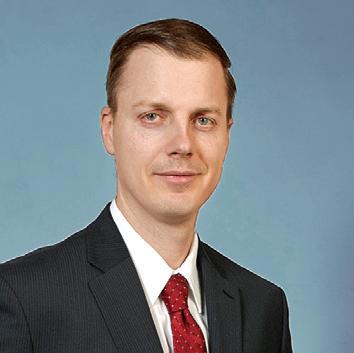
/ 414-336-7120
/ andrew.weiland@biztimes.com / @AndrewWeiland
GLANCE AT YESTERYEAR
38 / BizTimes Milwaukee MAY 1, 2023 BizConnections
5 MINUTES WITH… CHRIS CORKERY
Founder, Planet to Plate Inc.
SPRAWLED INSIDE an industrial building at the Century City Business Park on Milwaukee’s northwest side is an urban farm known as Hundred Acre. Run by New York-based startup Planet to Plate Inc., the vision of the enterprise is to address food insecurity and build a more sustainable supply chain for food businesses. Already in its 14th month of operation, the farm has struggled to keep up with demand for its flagship products: salad mix and Italian large leaf basil. In a recent interview with BizTimes Milwaukee reporter Ashley Smart, Planet to Plate founder Chris Corkery shared plans to open a second facility in Milwaukee by the end of this year, allowing the farm to scale production by 400 times its current volume of 1,500 pounds per week. The following portions of their conversation are edited for length and clarity.
PLANS FOR THE SECOND LOCATION
“The location of the new facility is under lock and key, unfortunately. It’s a larger deal with a real estate investment group that is looking to acquire (the building) and be our landlord. We’re focused heavily on the city limits and would be going into an industrial style warehouse and/or a discontinued type of office space. It’s kind of the solution we provide on the real estate front because those spaces are otherwise vacant.
“At the end of the day, farming is heavily tied to real estate. If we can do it at one location, why can’t we do this in multiple locations across
southeastern Wisconsin, or even just Milwaukee, and develop a full-scale network of indoor production facilities?”
WHAT ABOUT THE EXISTING FACILITY?
“The intent is to keep the current facility operational as a training and research and development lab. We are committed to that community. We’re committed to each location we go into. We’re not looking to go into one (location) to then build another and leave.
“Generally, we’ve developed a remarkable training program for folks who want to get into the world of urban ag-tech. It’s not just the number of jobs (that benefits the community), but the increased access to this kind of fresh food system, with the educational programs that we run on a weekly basis.”

NEW PARTNERSHIPS
“Hundred Acre exists as a rapid response to an ailing food system. The catalyst was the pandemic. You had a lot of unused real estate, distribution problems from A to Z for various products, growing environmental concerns and social unrest growing across the country. We thought this was just bringing a lot of things together and addressing a lot of issues with both old school and new school solutions.
“We just landed a contract with the Milwaukee Brewers, so we are the salad supplier across American Family Field, which goes through a tremendous amount now that they’ve revamped their food programs. Last year, in our first year of business, we grew, harvested and distributed 20,000 salad portions to underserved communities locally through our new partner Feeding America. We also rolled out our retail offering with partner Outpost Natural Foods. We’re focused overall on increasing the availability, awareness and consumption of locally grown fresh crops.”
n
LILA ARYAN PHOTOGRAPHY biztimes.com / 39
Chris Corkery
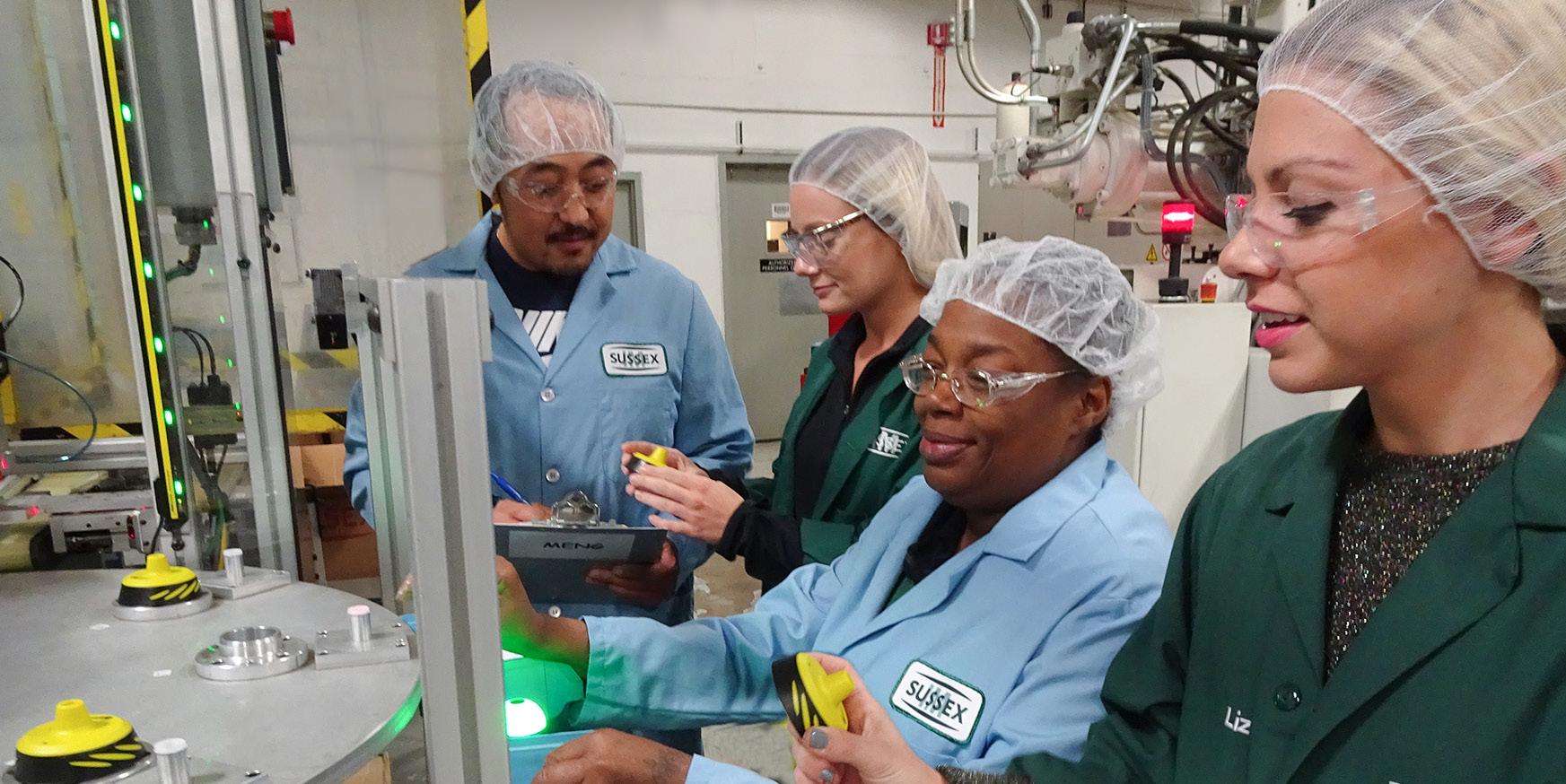
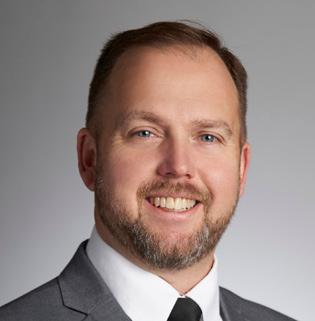
WMEP Manufacturing Solutions can help make any of these happen in your organization. Contact us today. PART OF THE Contact Eric Decker today for a no-obligation, free consultation: decker@wmep.org | 414-429-2252 WMEP.org Improve employee onboarding. Develop and use work instructions to improve effectiveness of new employees. Provide training to foster a culture of continuous improvement and optimize contributions. Improve supervisor and manager skills to meet employee’s changing workplace needs. Improve employee engagement to increase productivity. Improve organizational culture and employee experience. Manufacturing solutions to this challenge (check all that apply). A TOP MANUFACTURING CHALLENGE: HIGH EMPLOYEE TURNOVER & TIGHT LABOR MARKET




























 By Arthur Thomas, staff writer
By Arthur Thomas, staff writer





 By Ashley Smart, staff writer
By Ashley Smart, staff writer
















































































